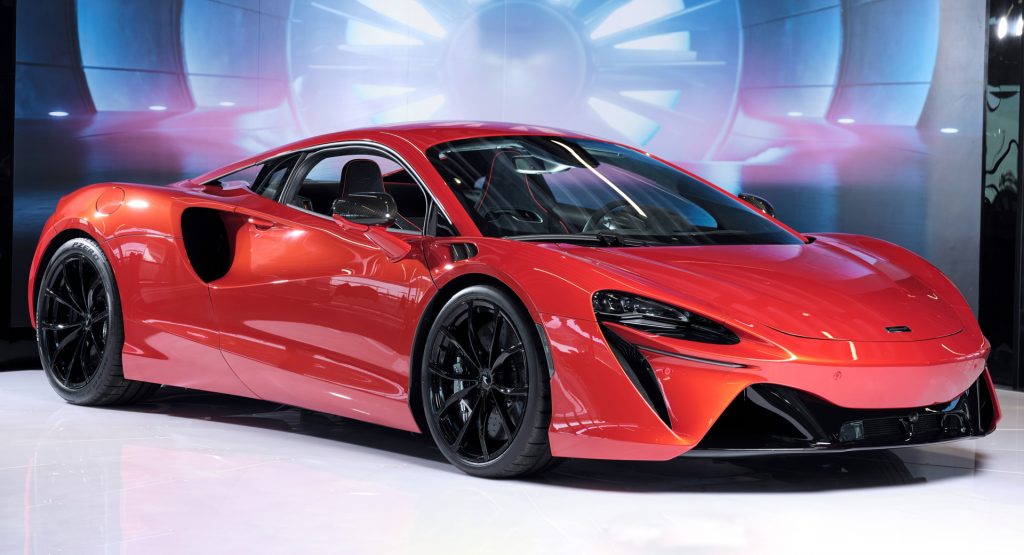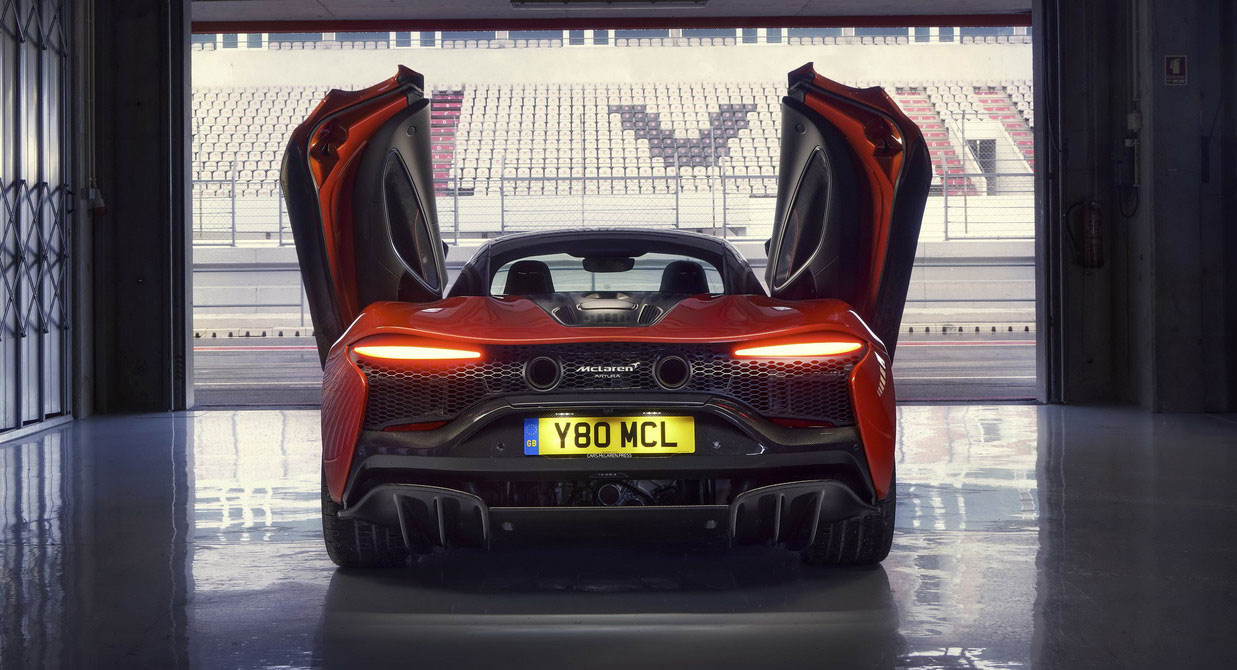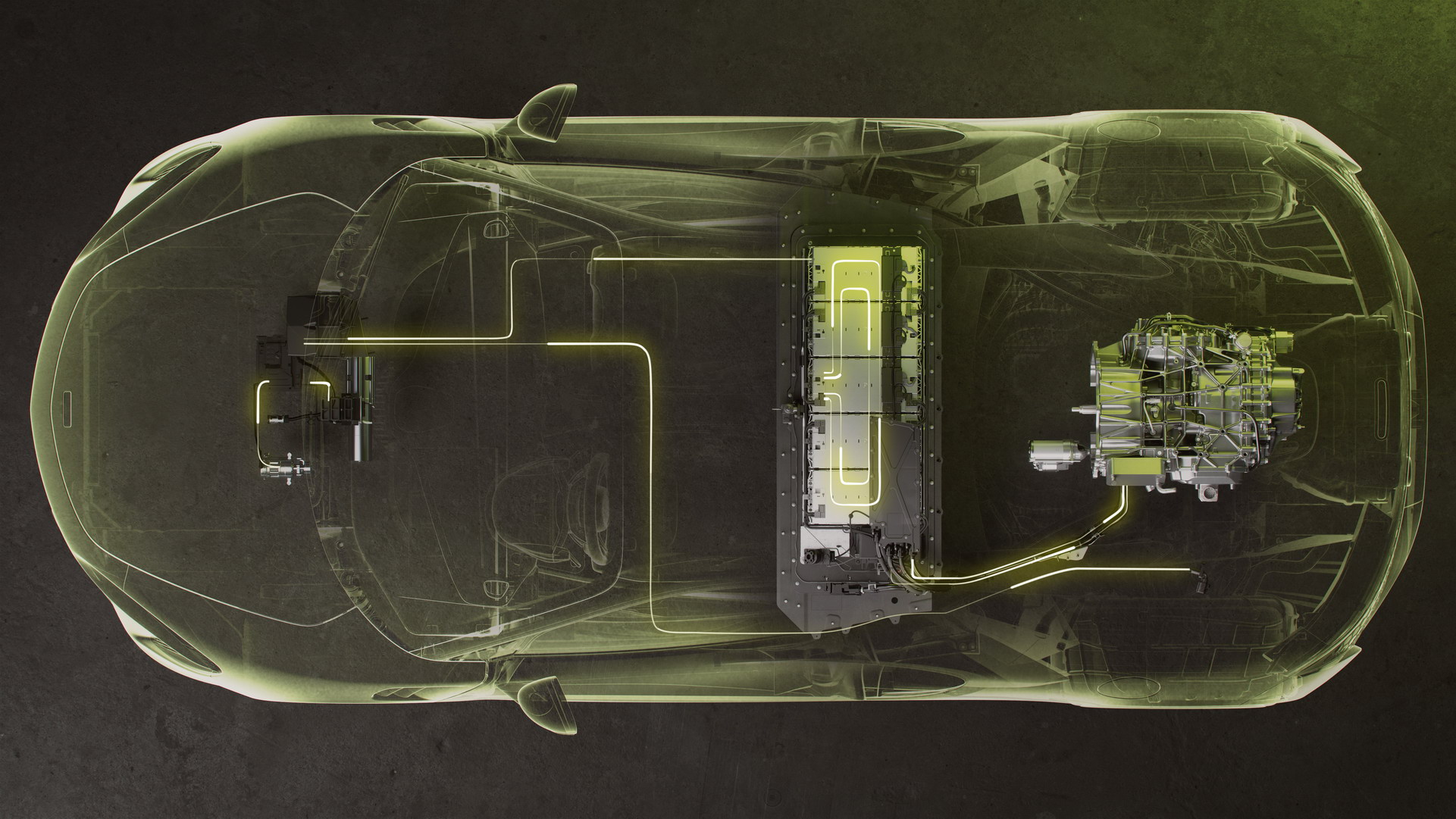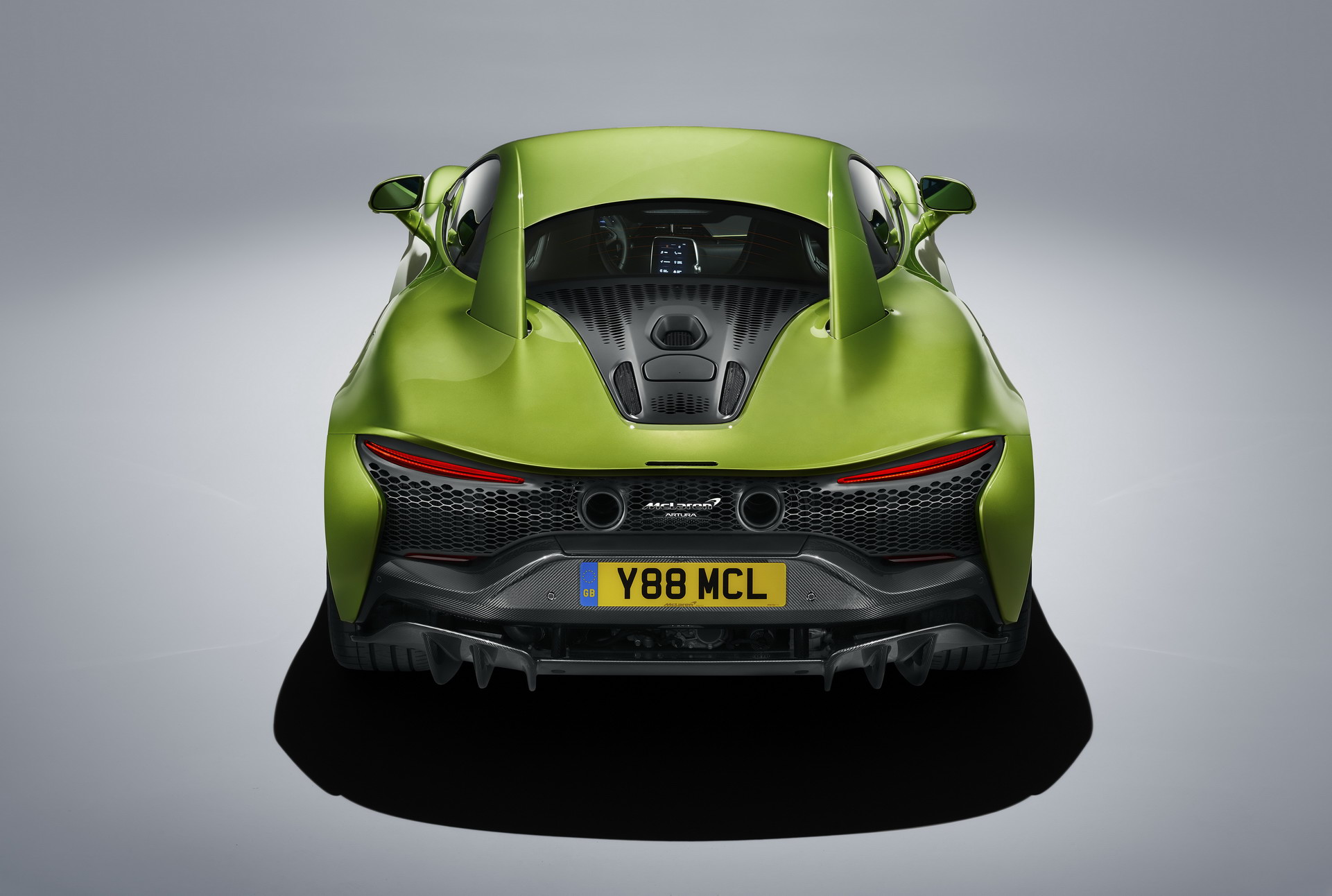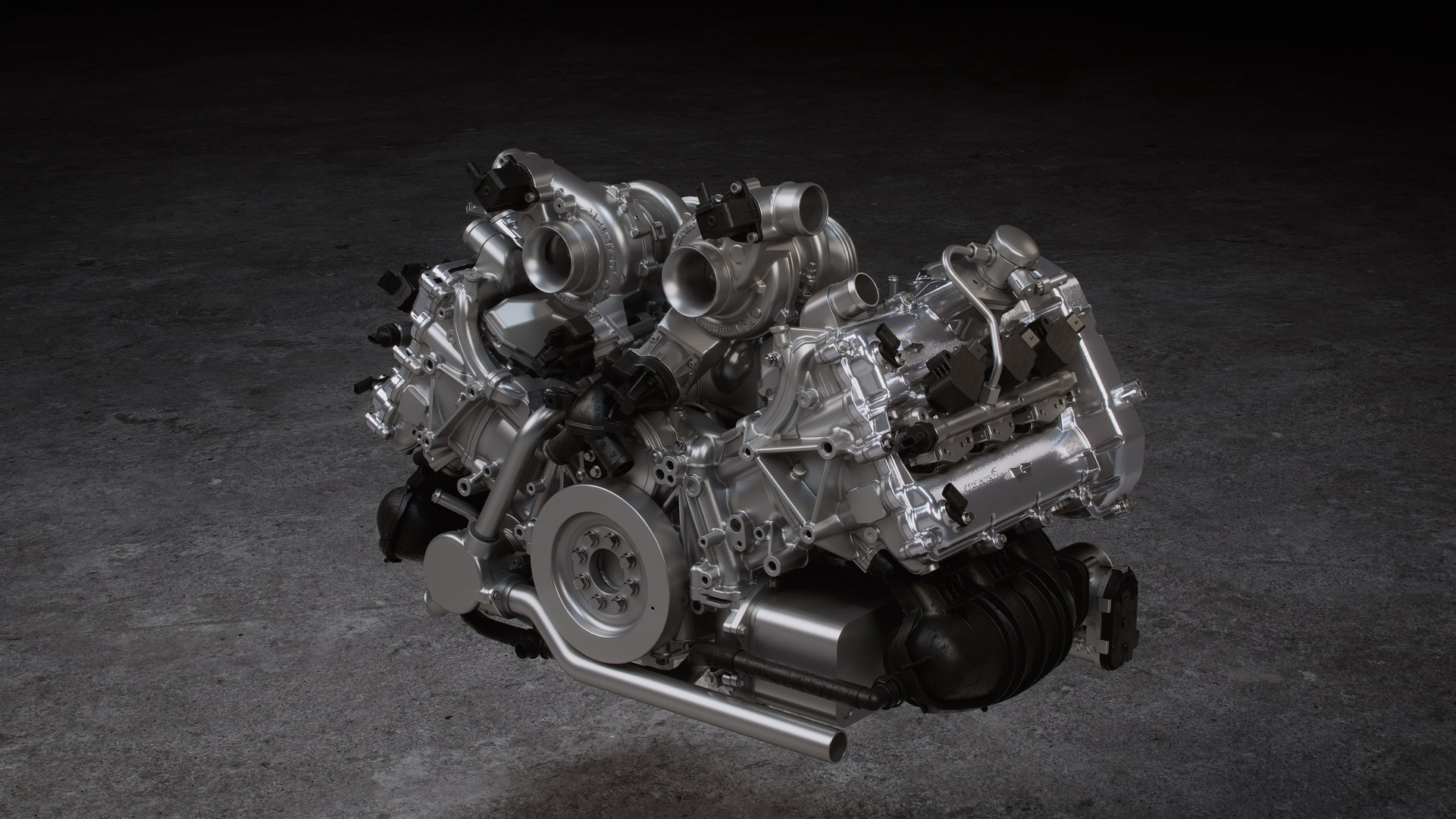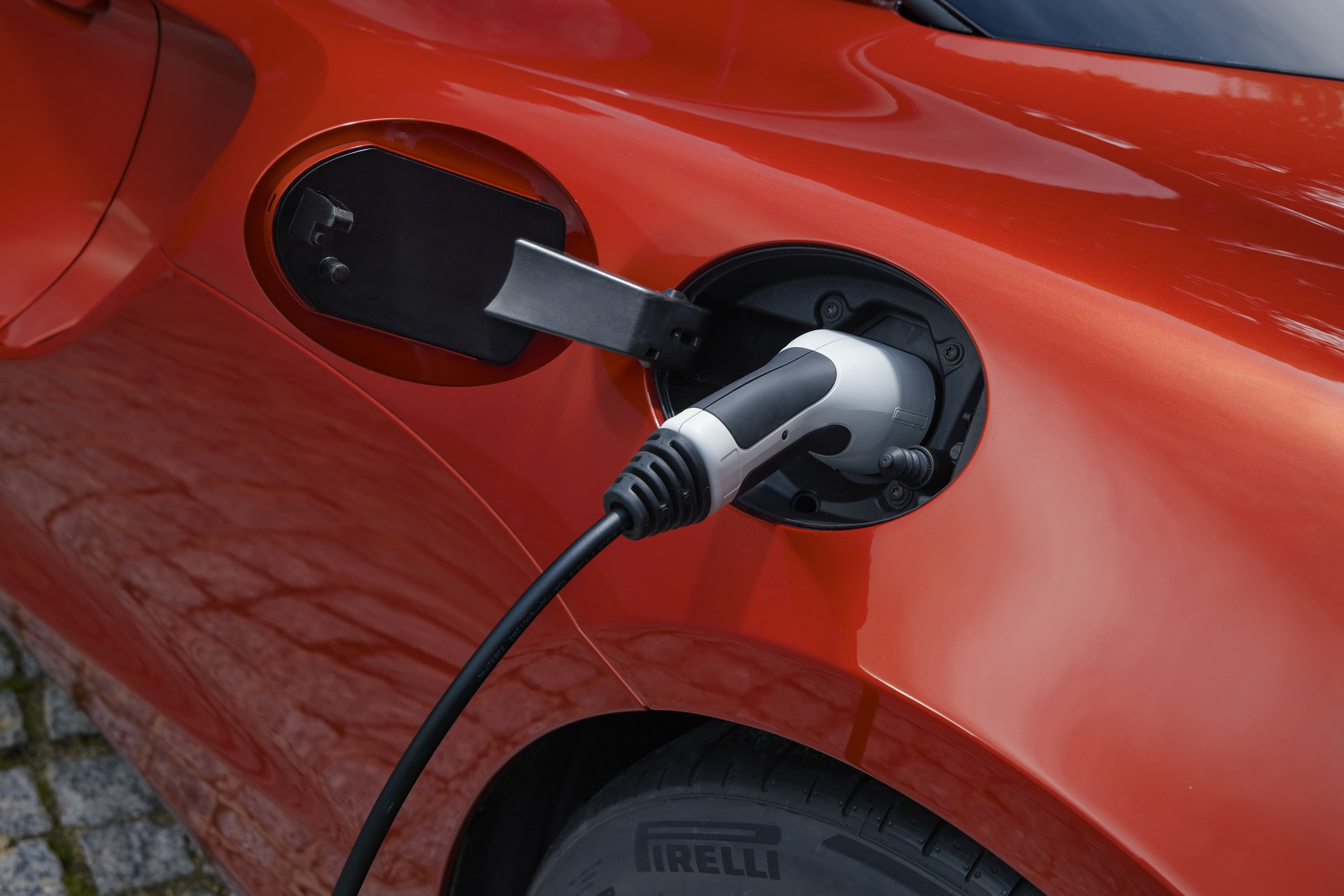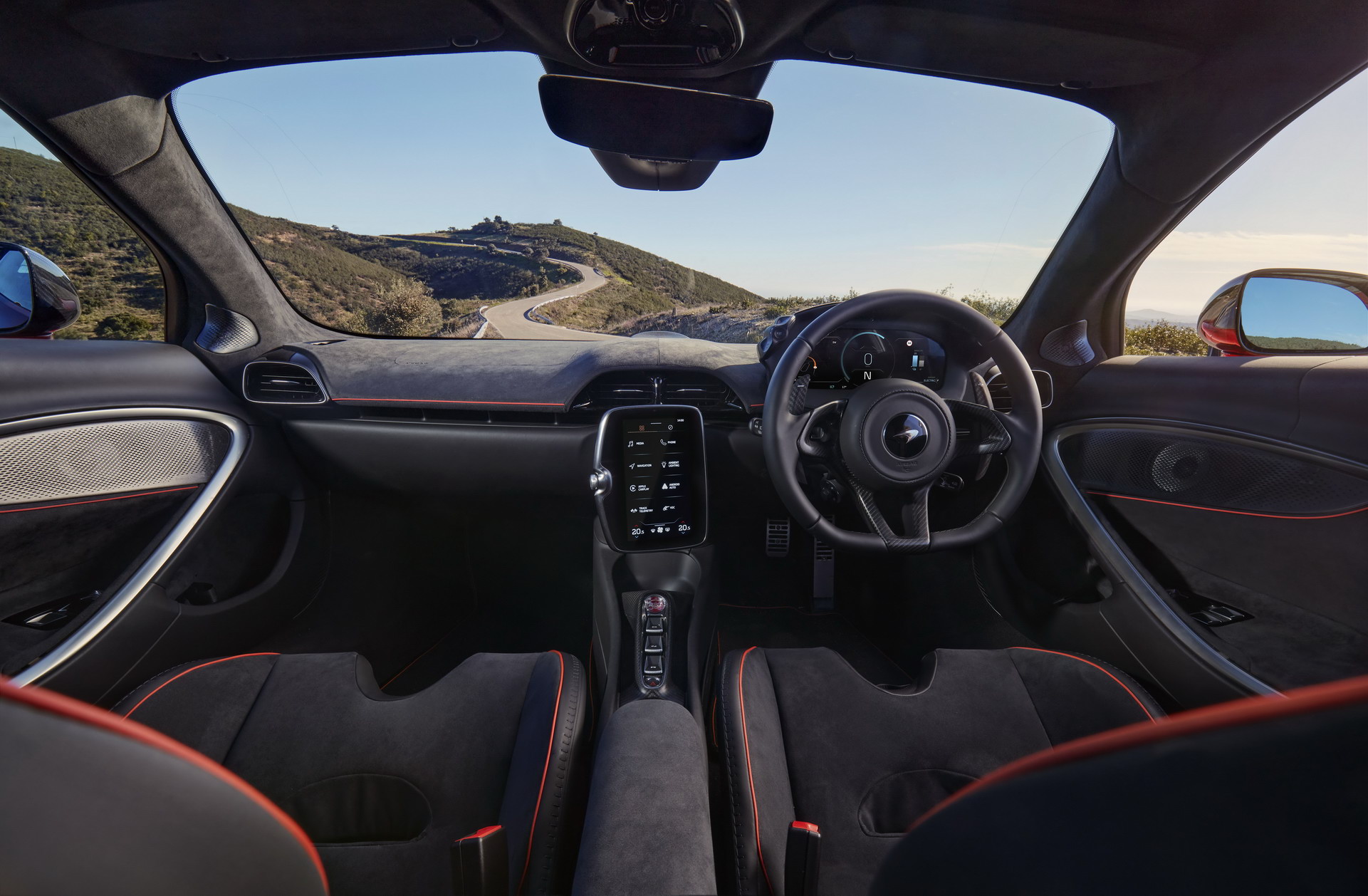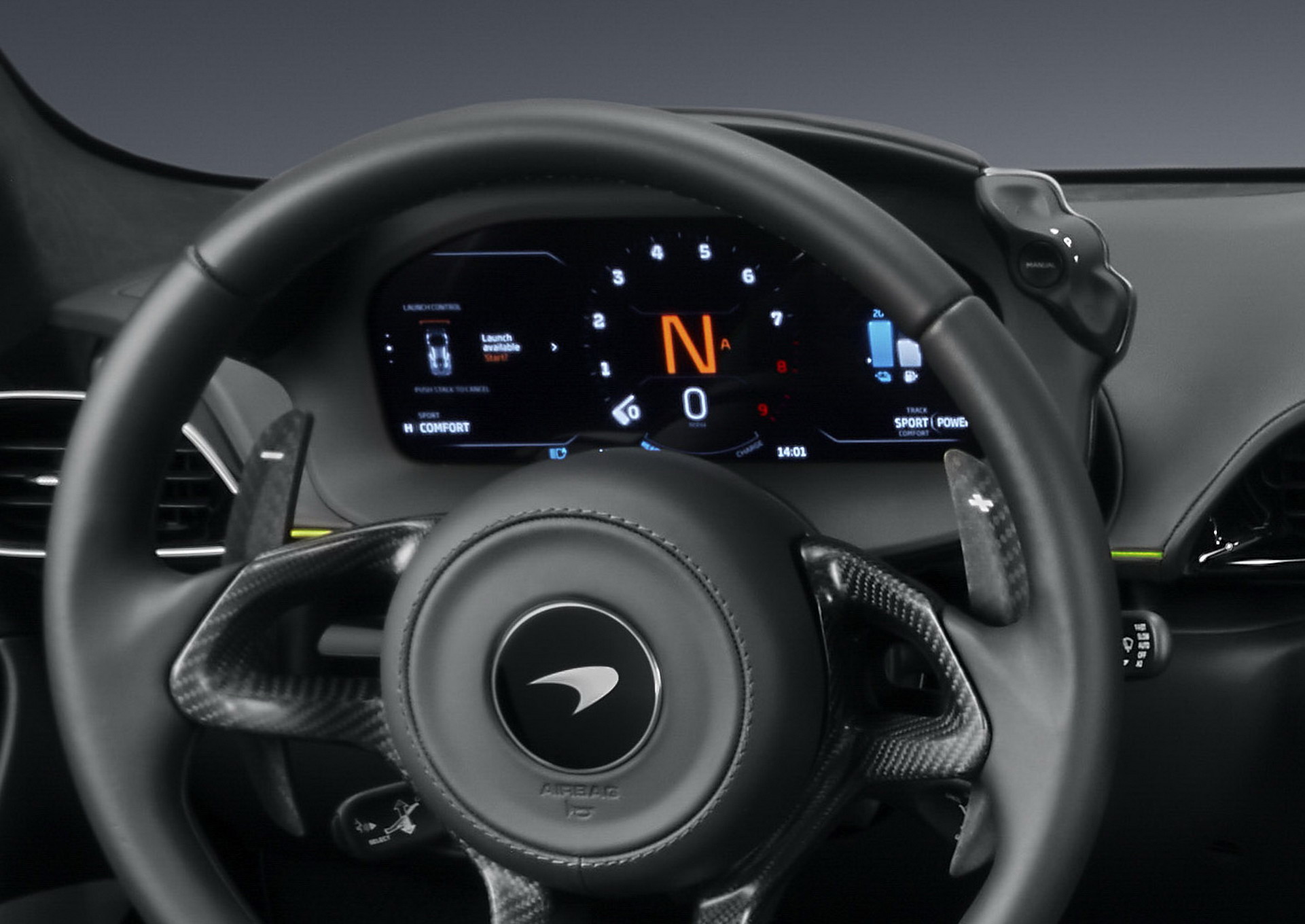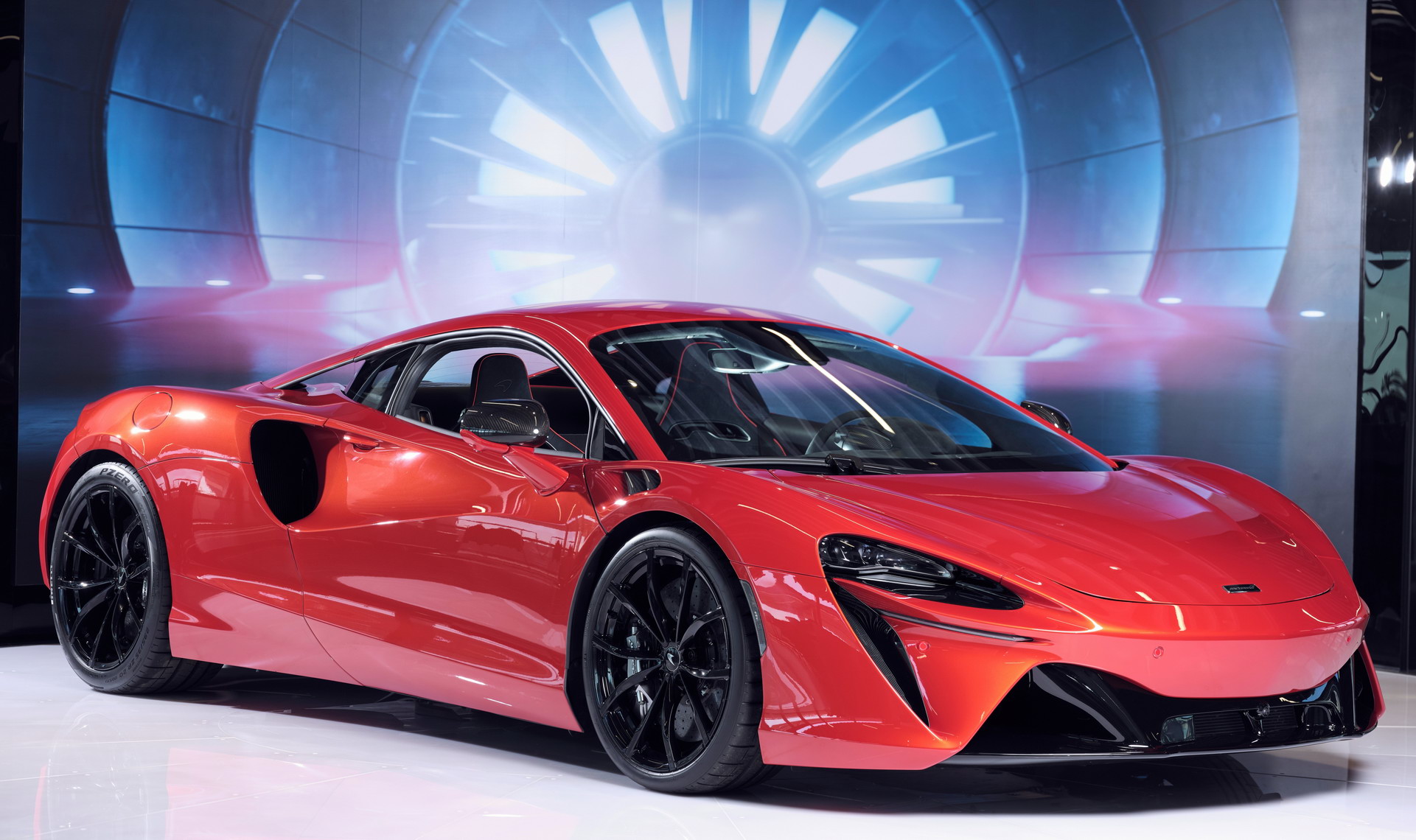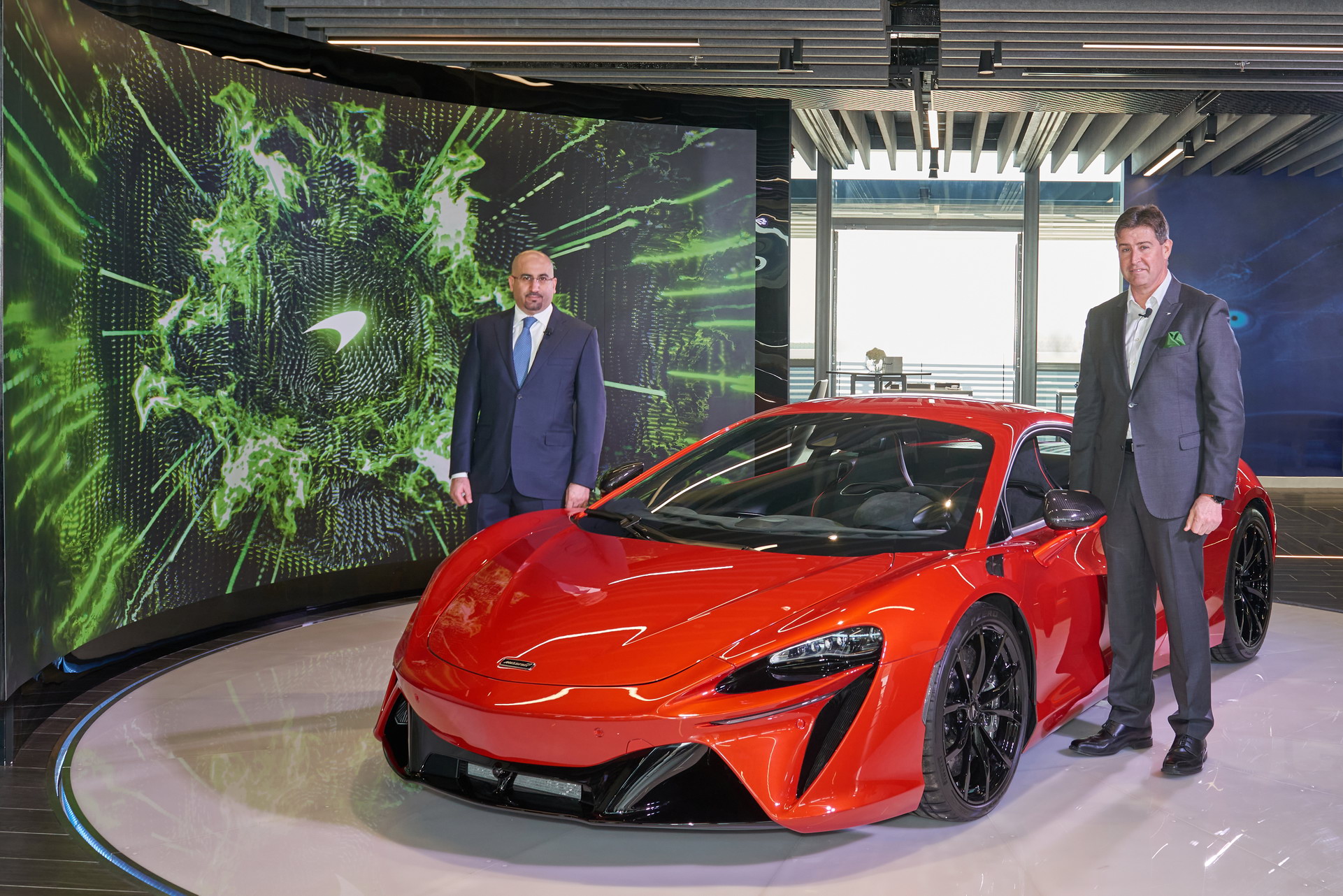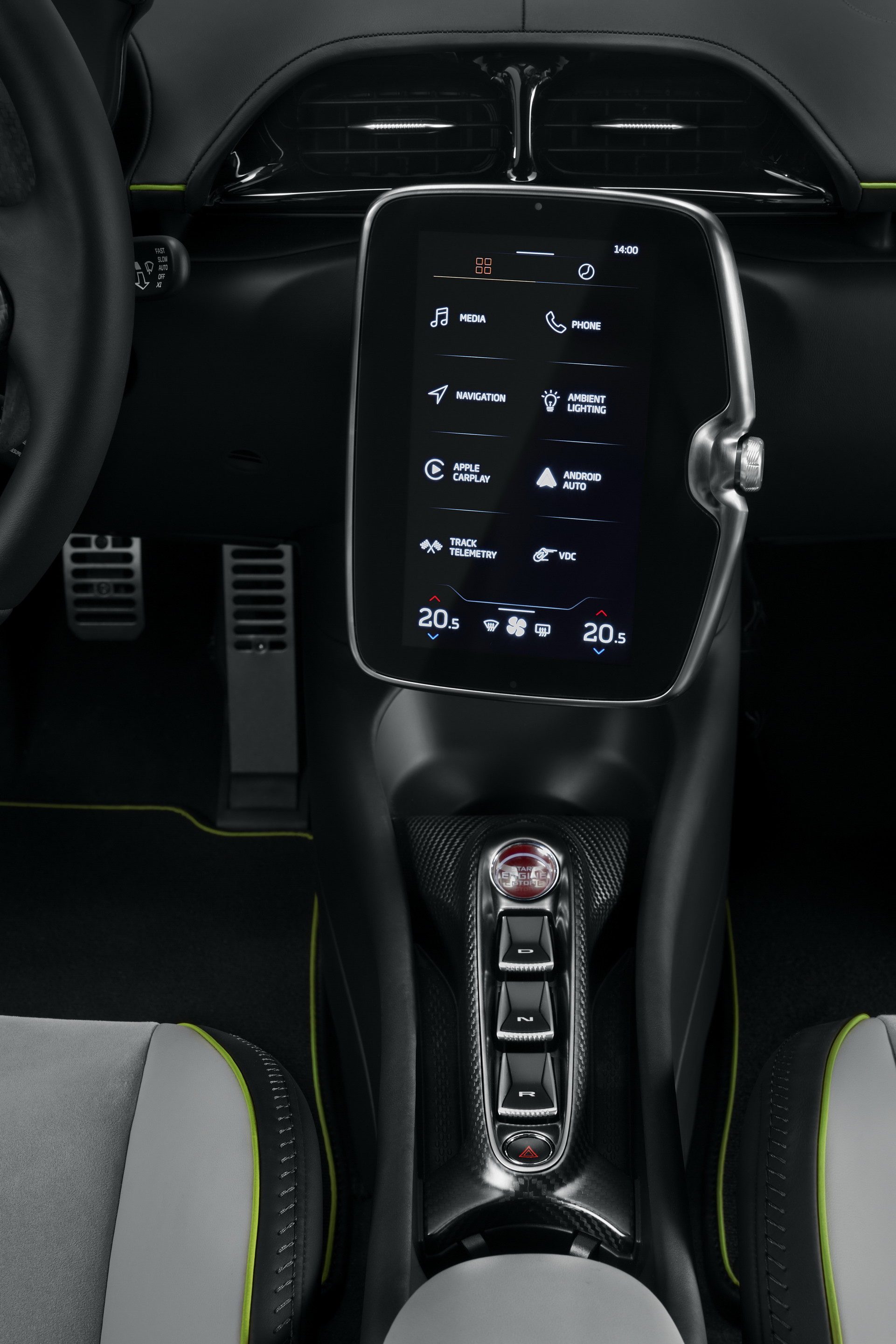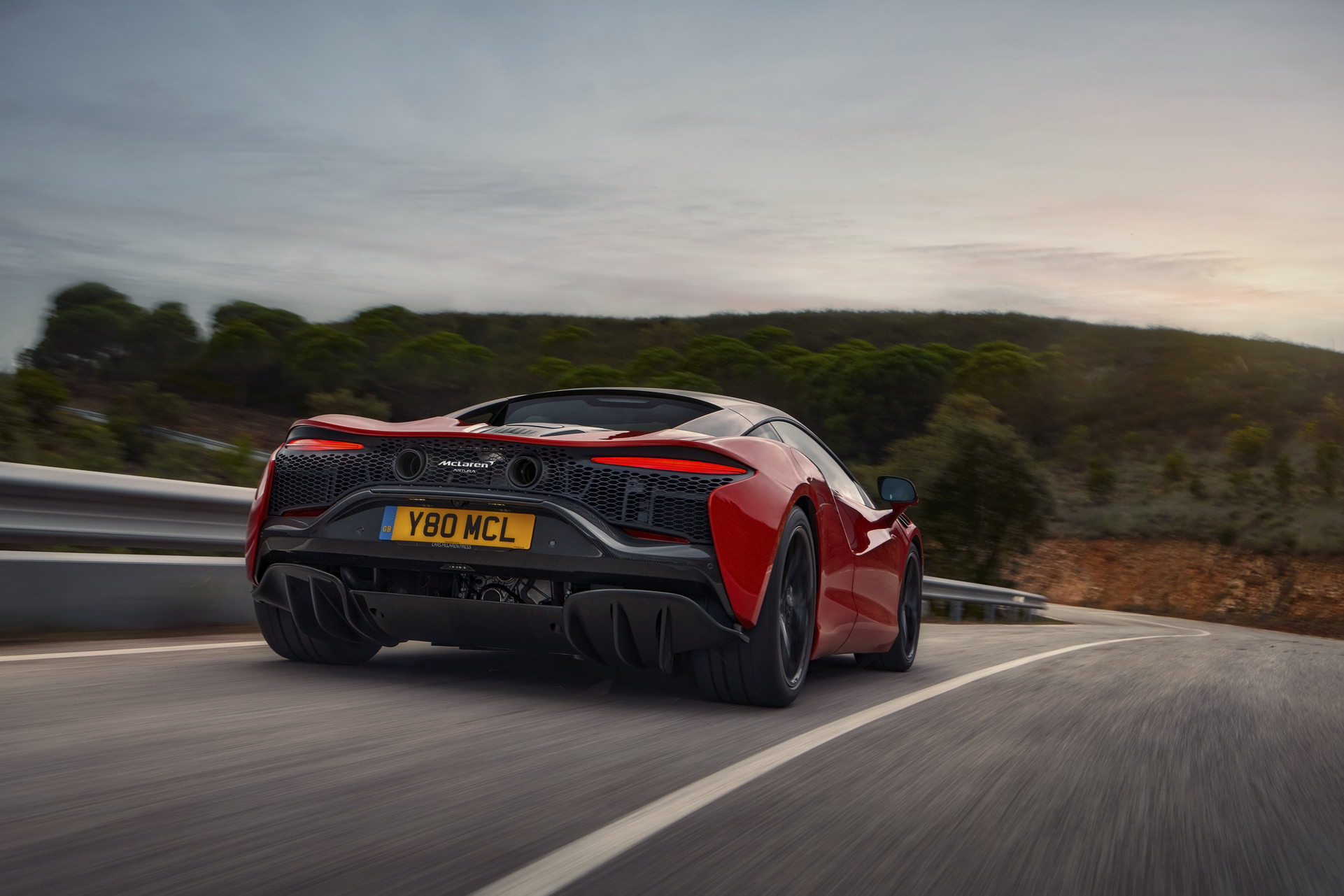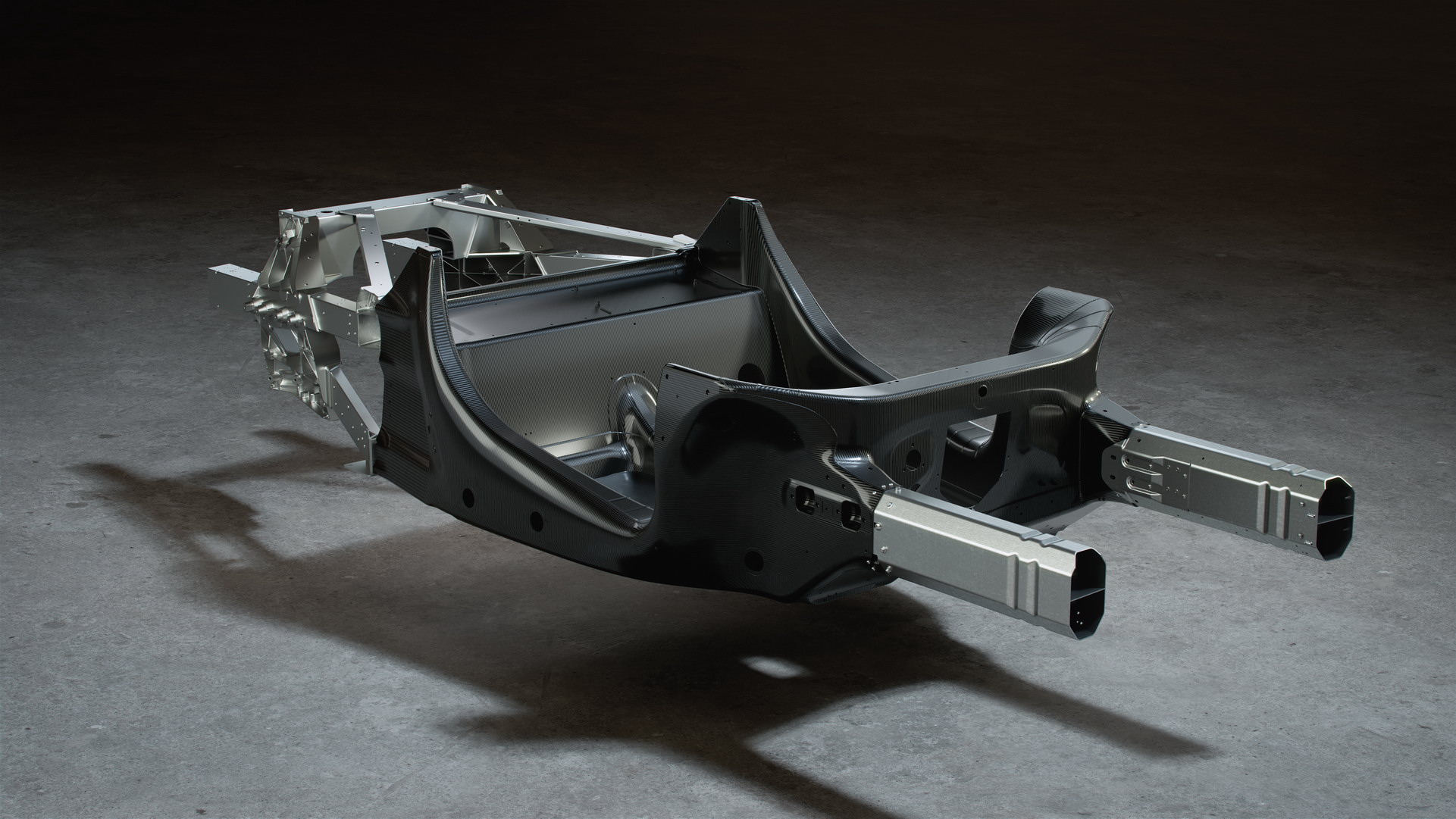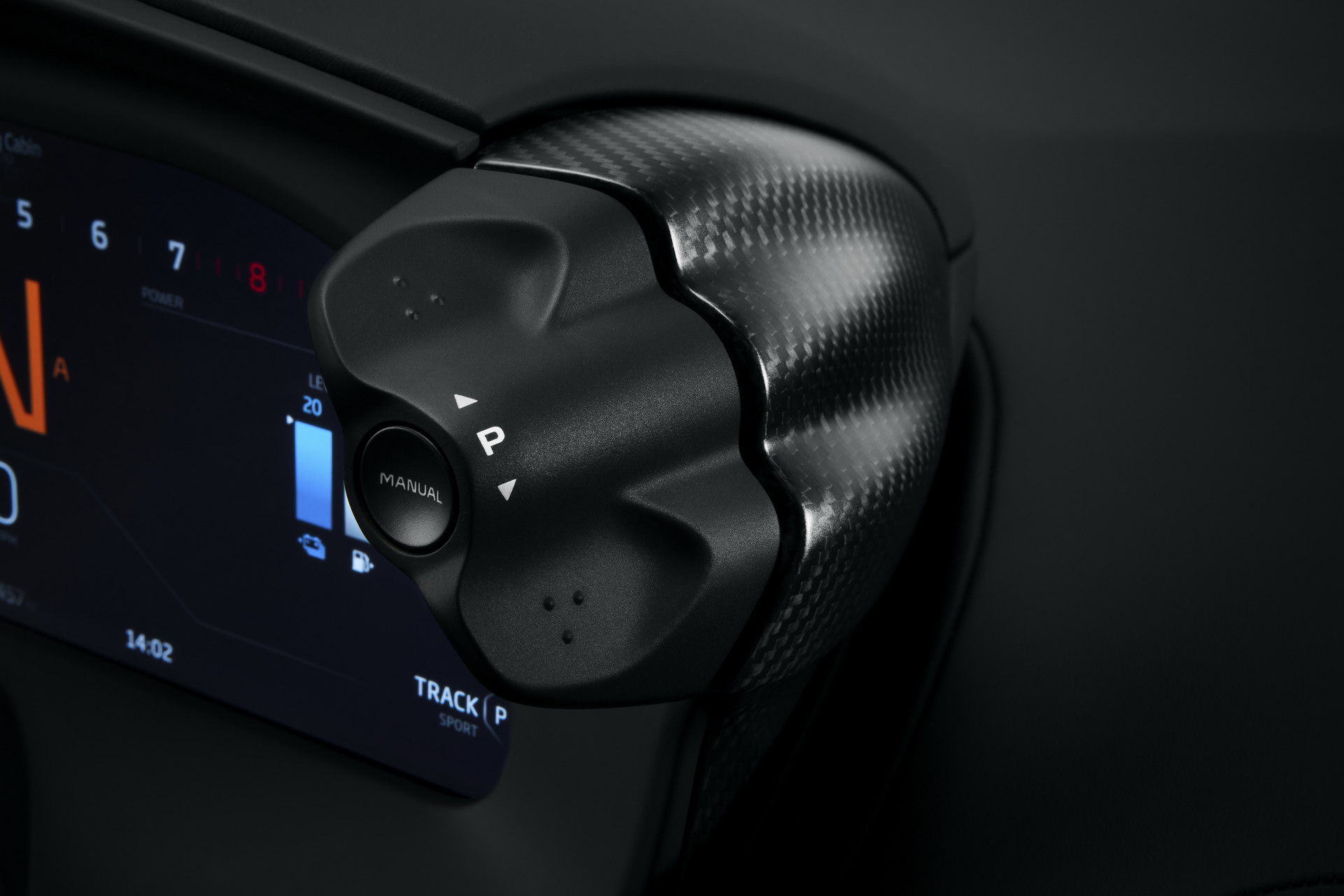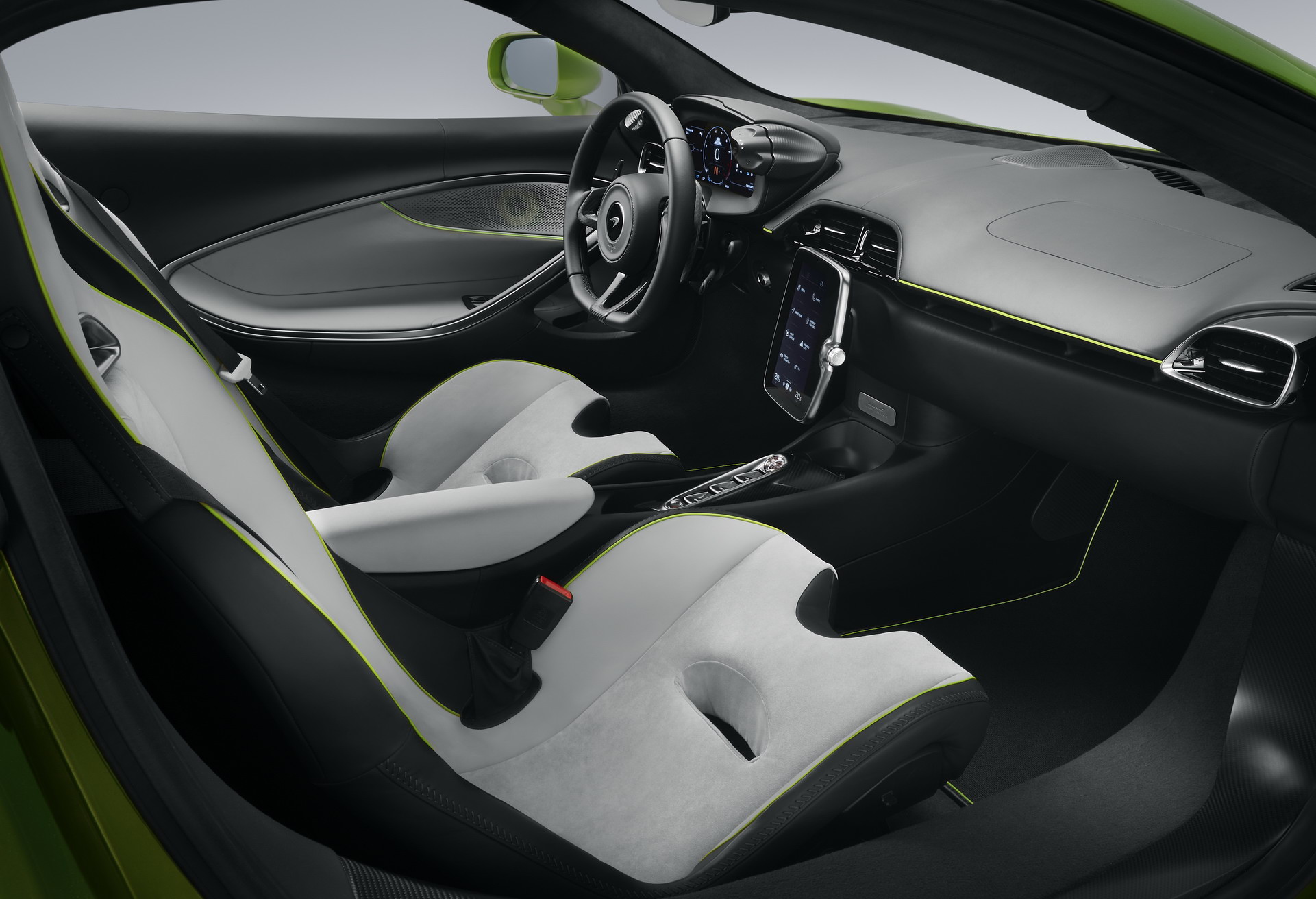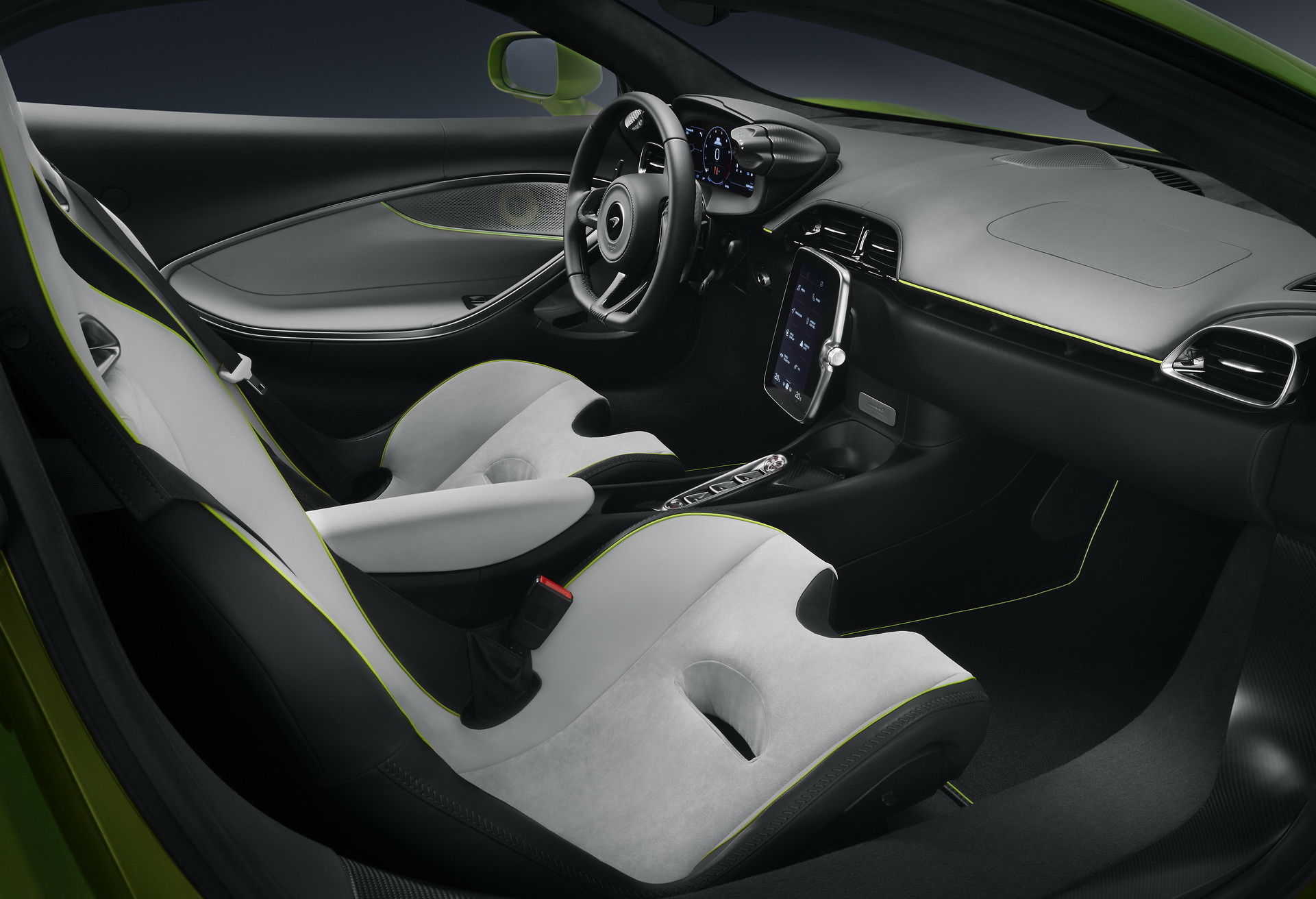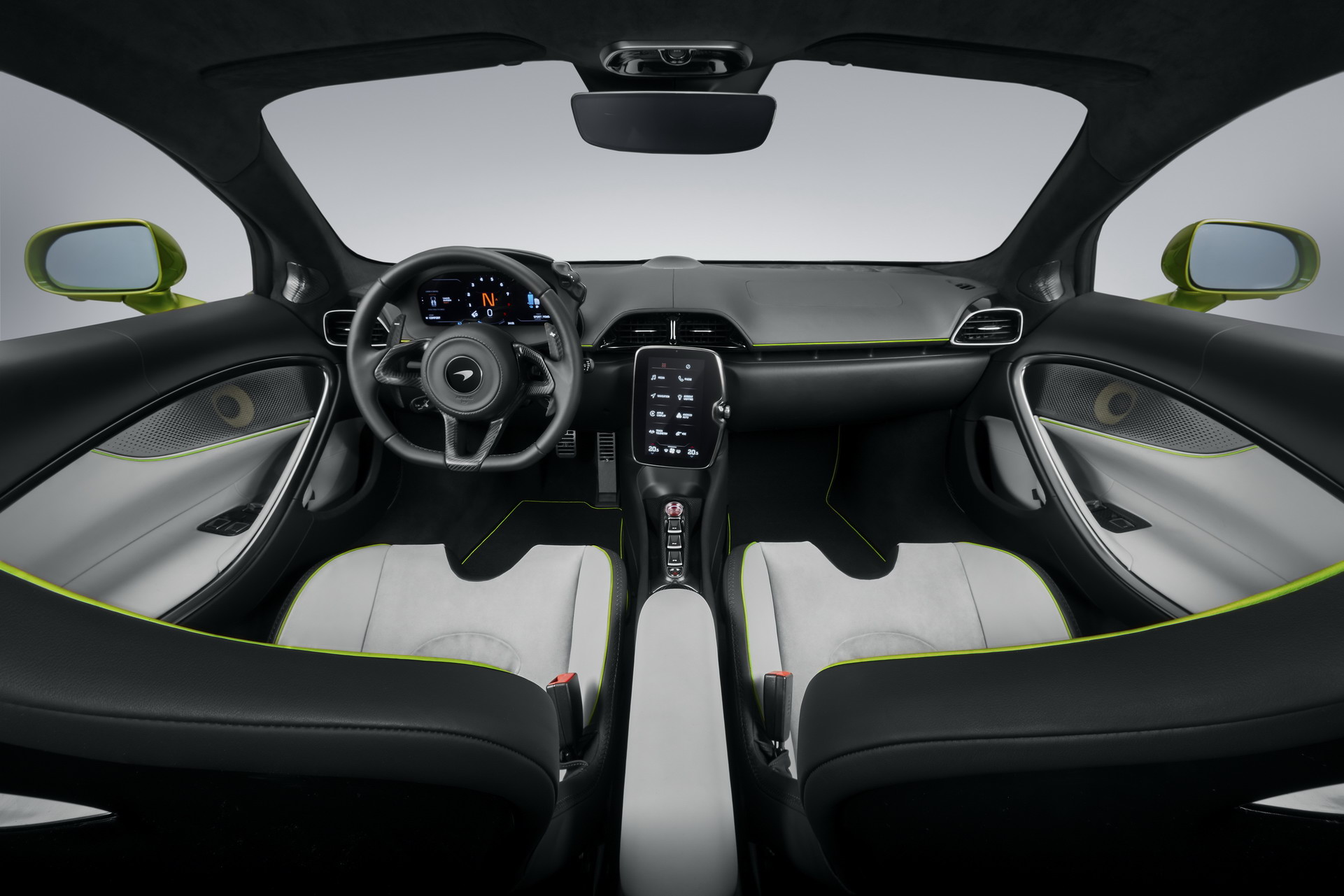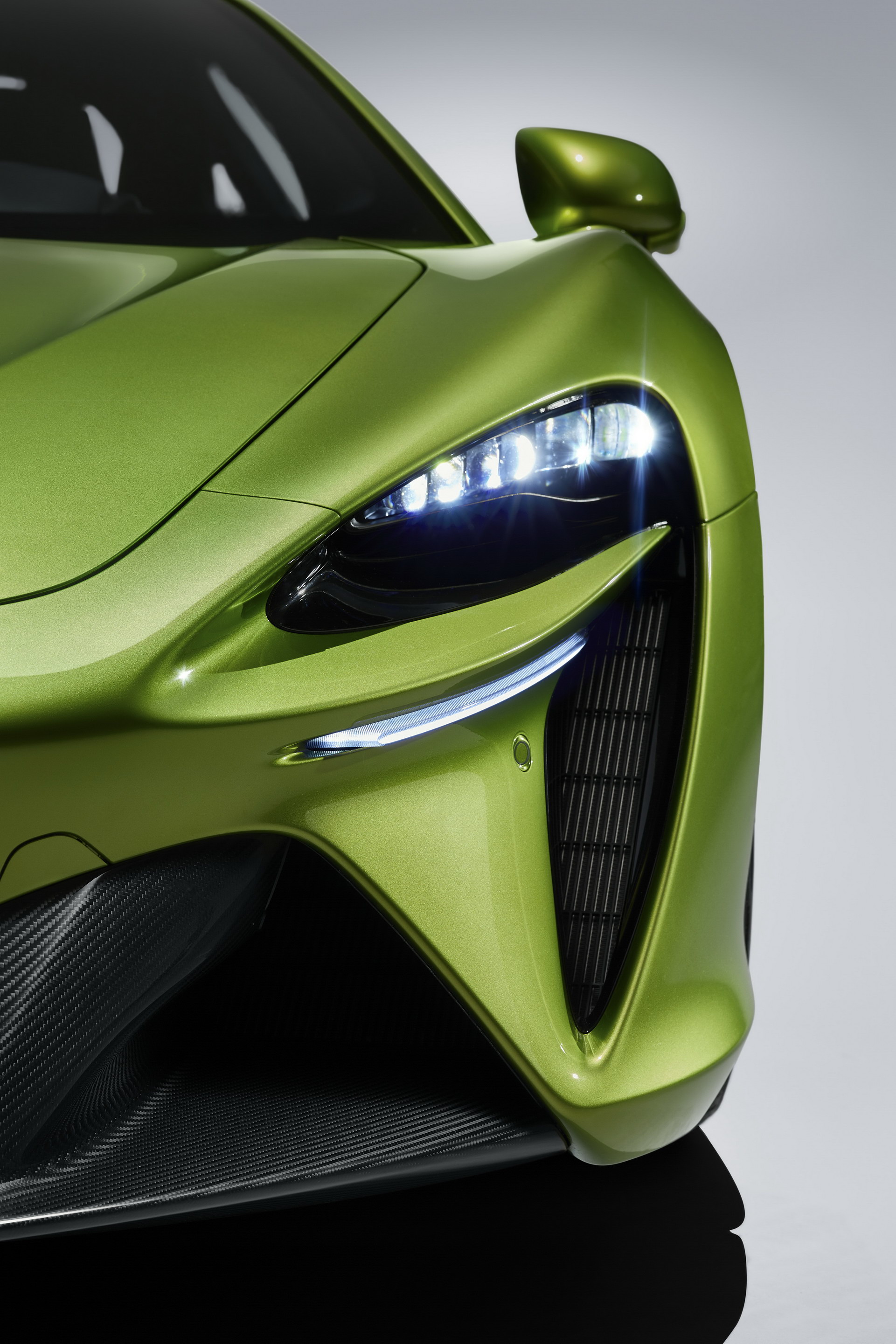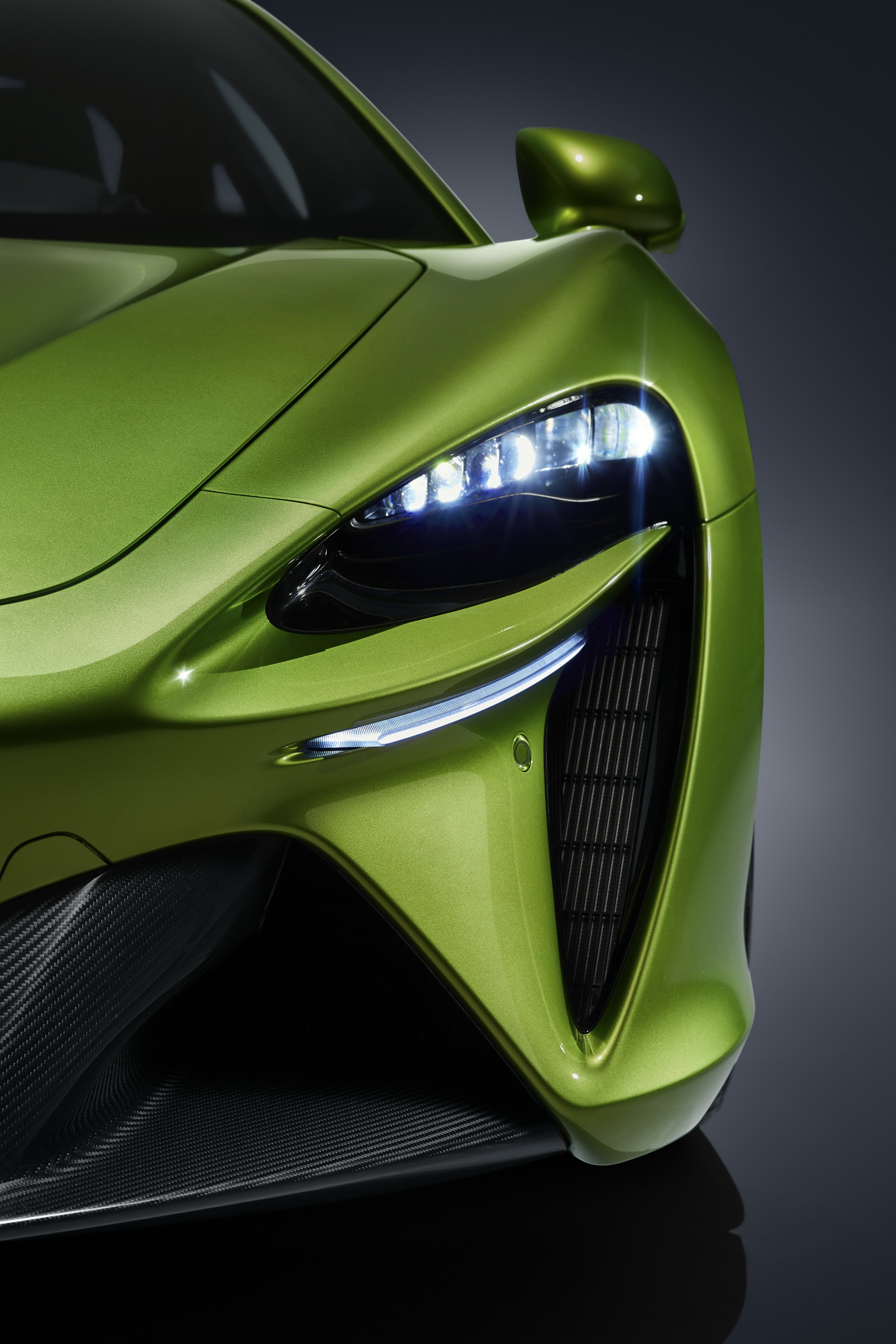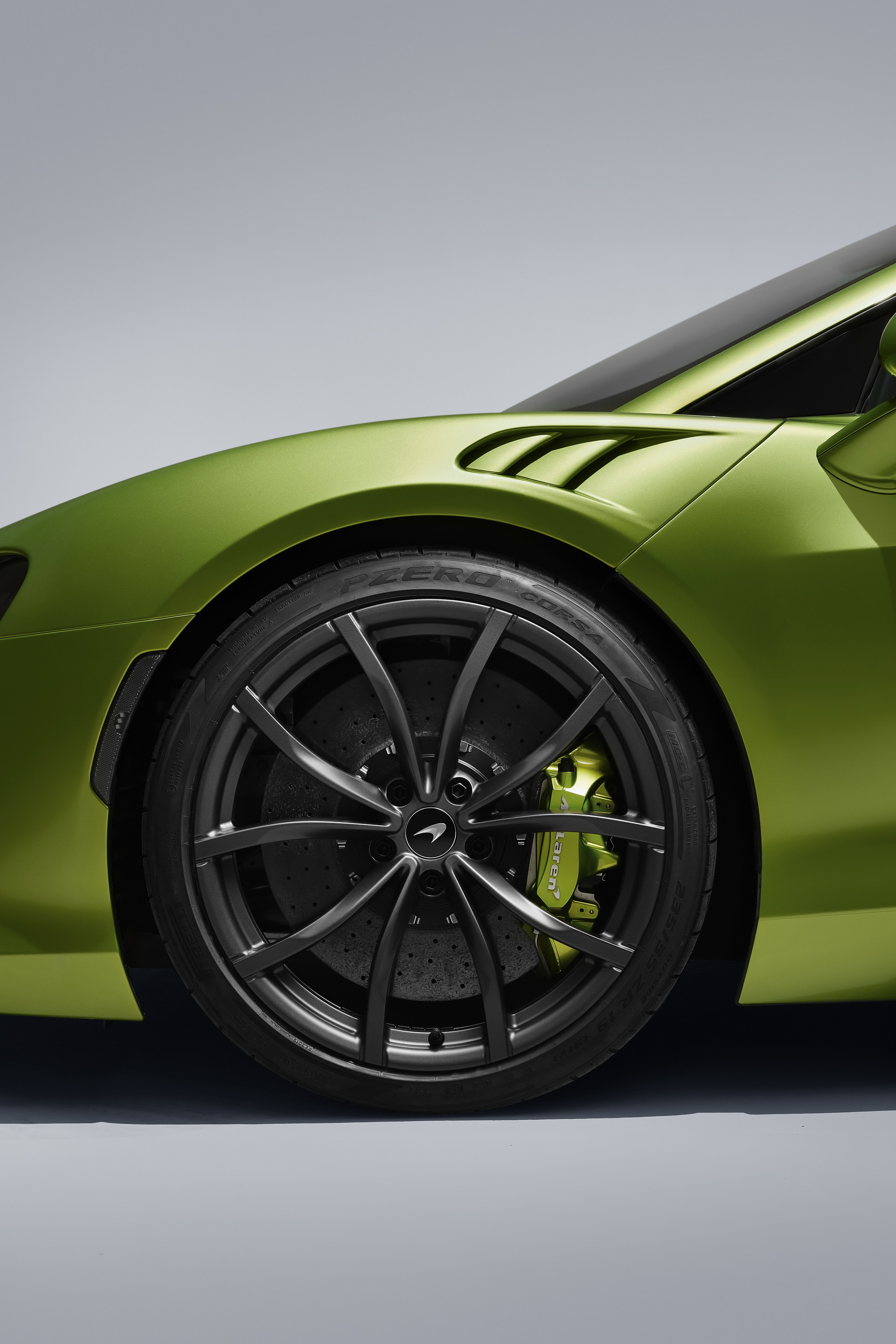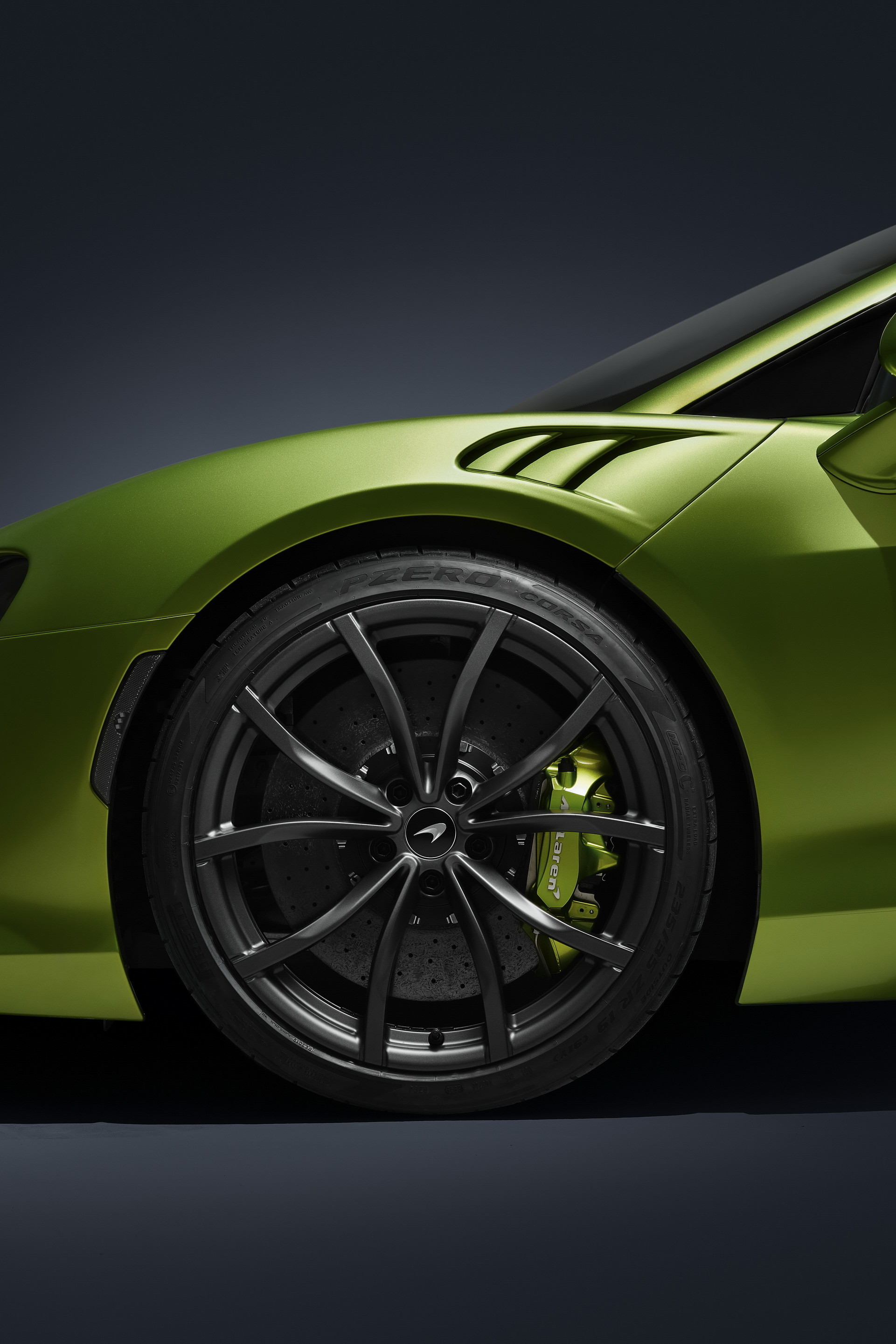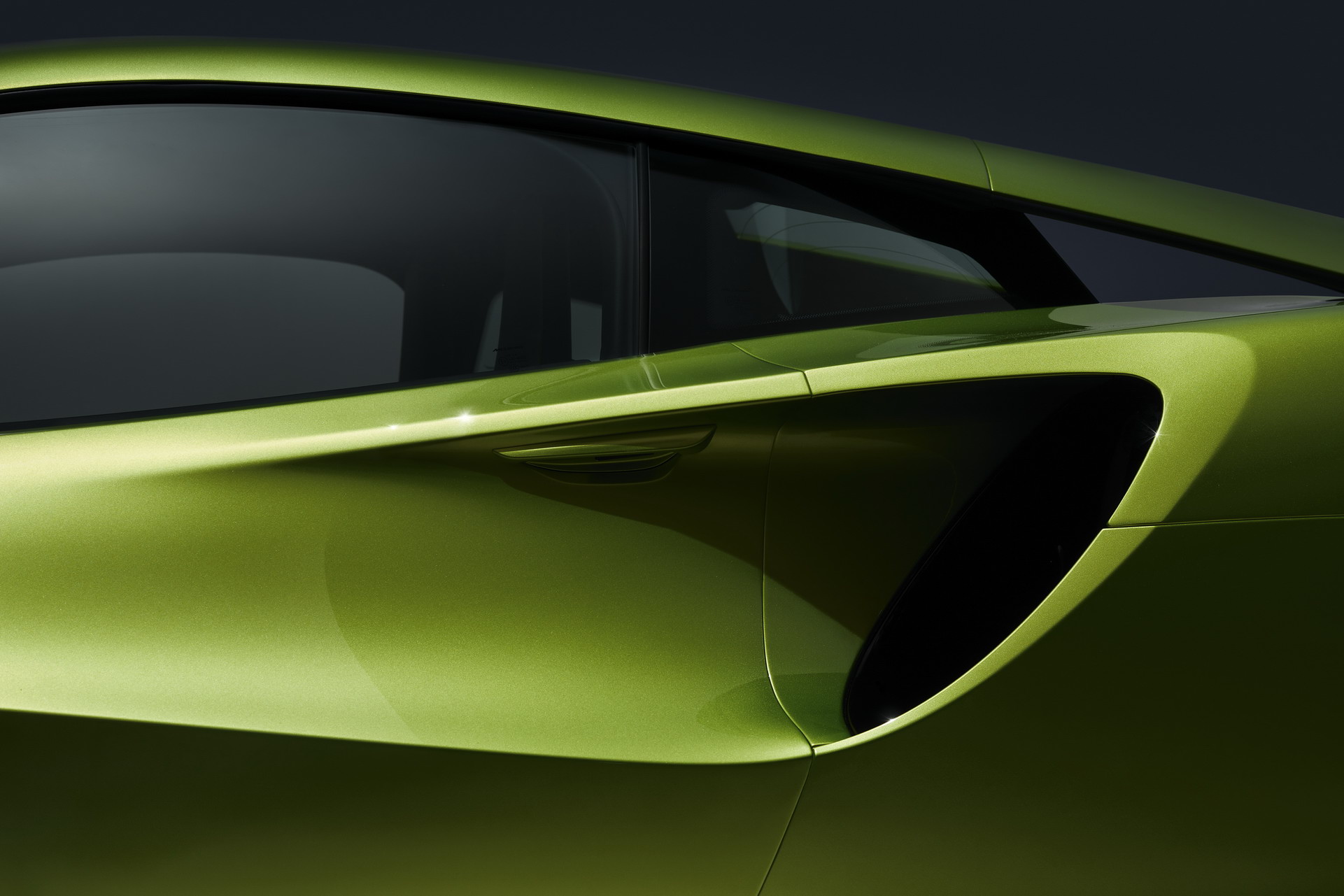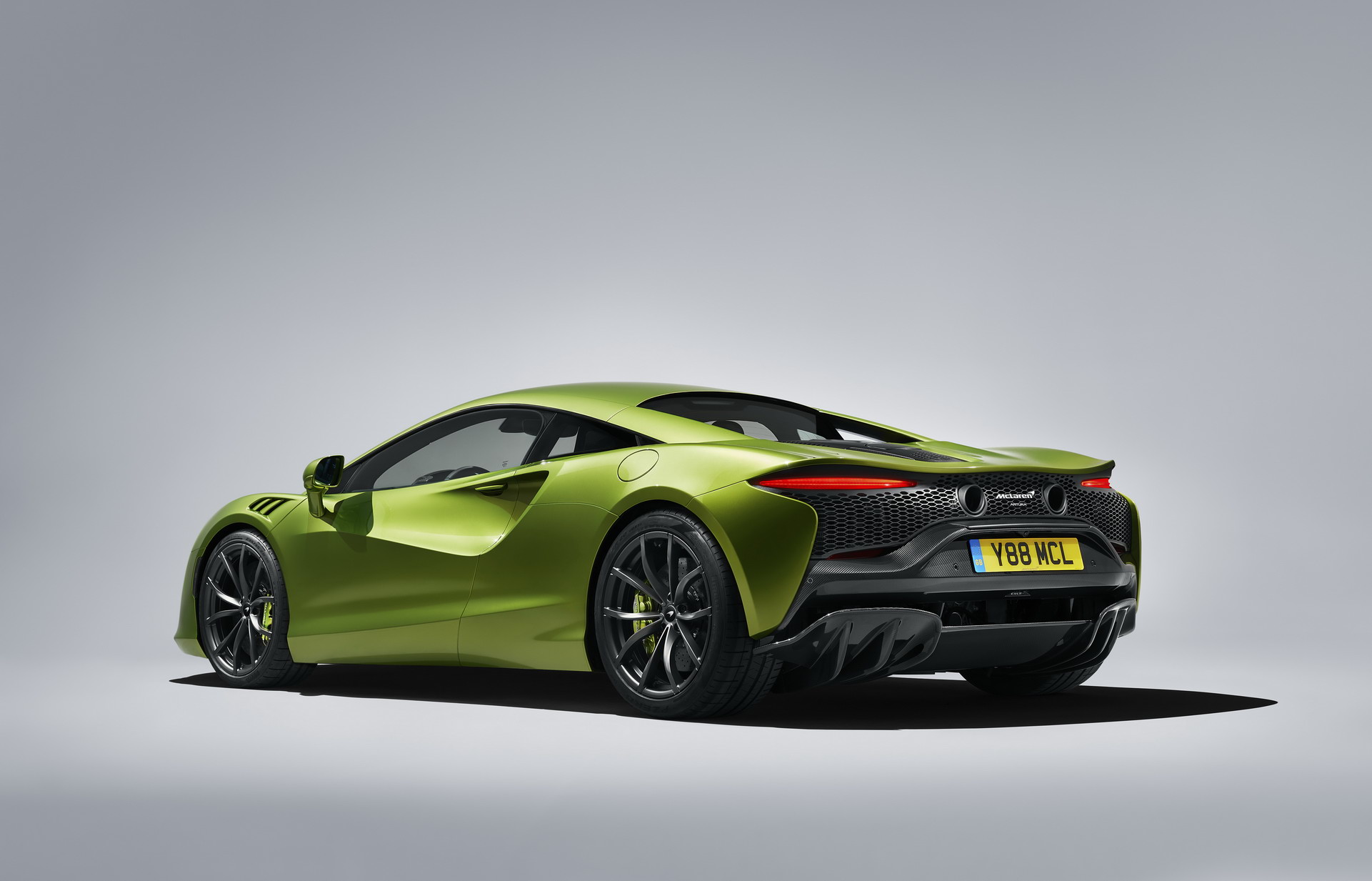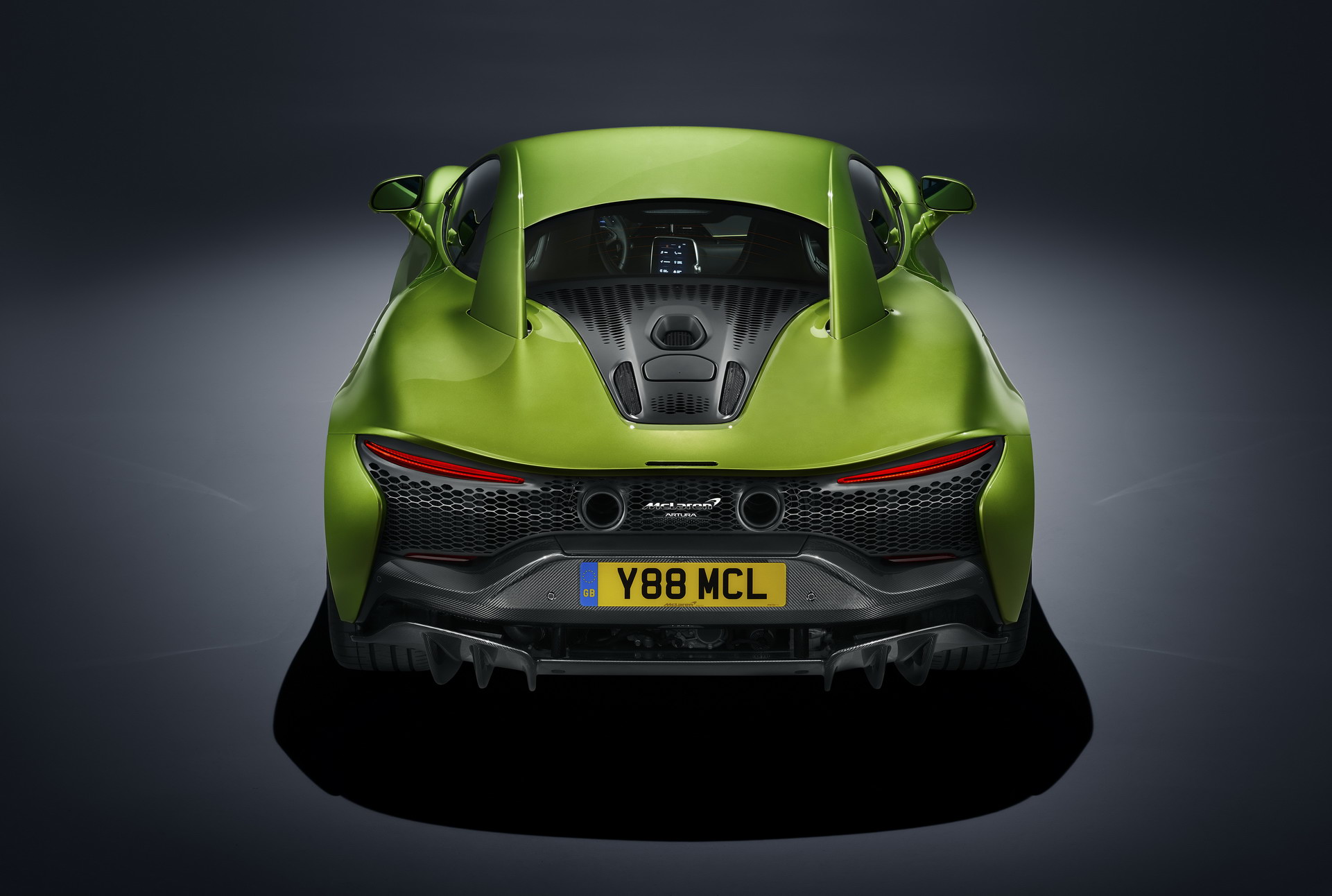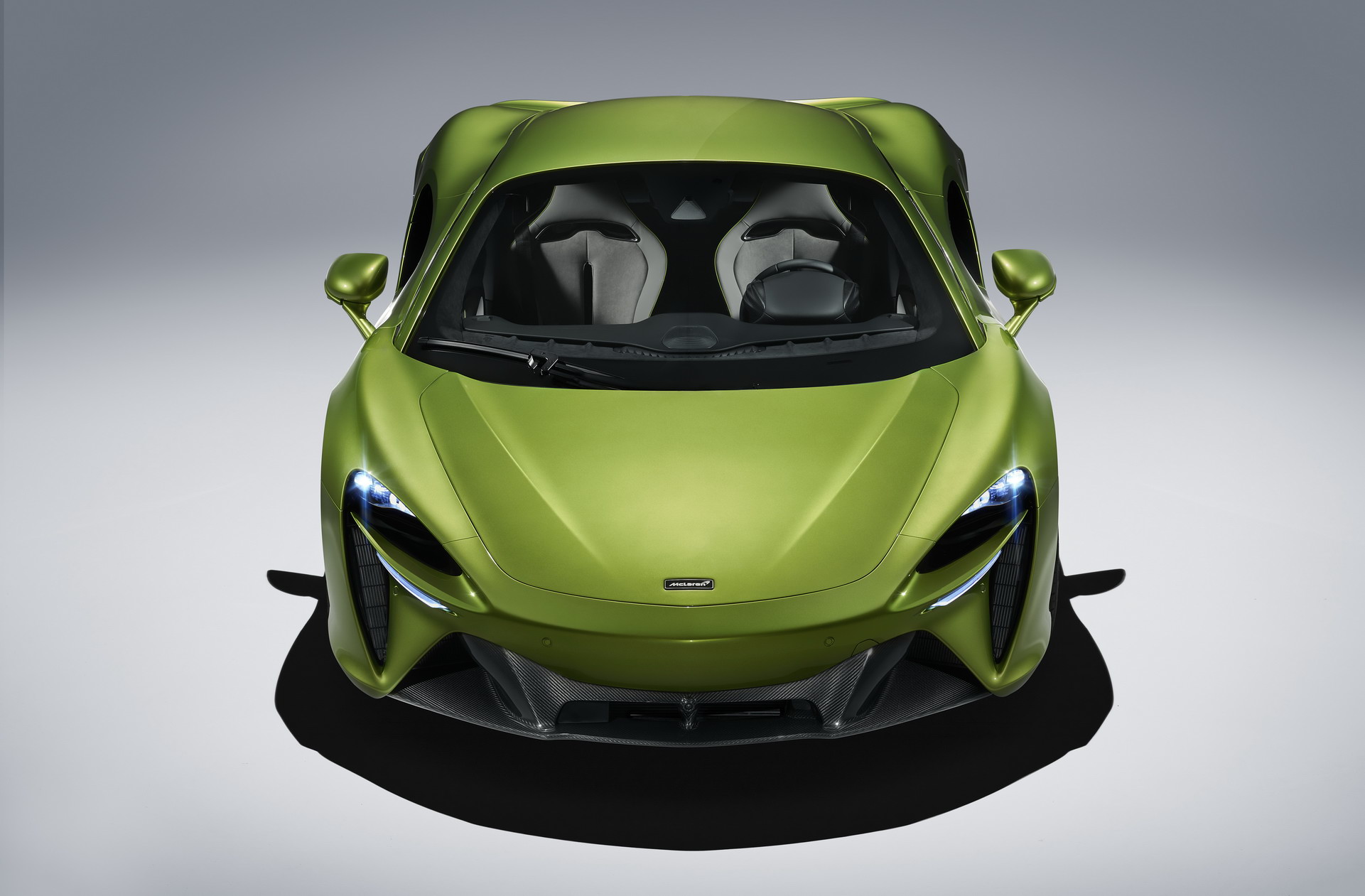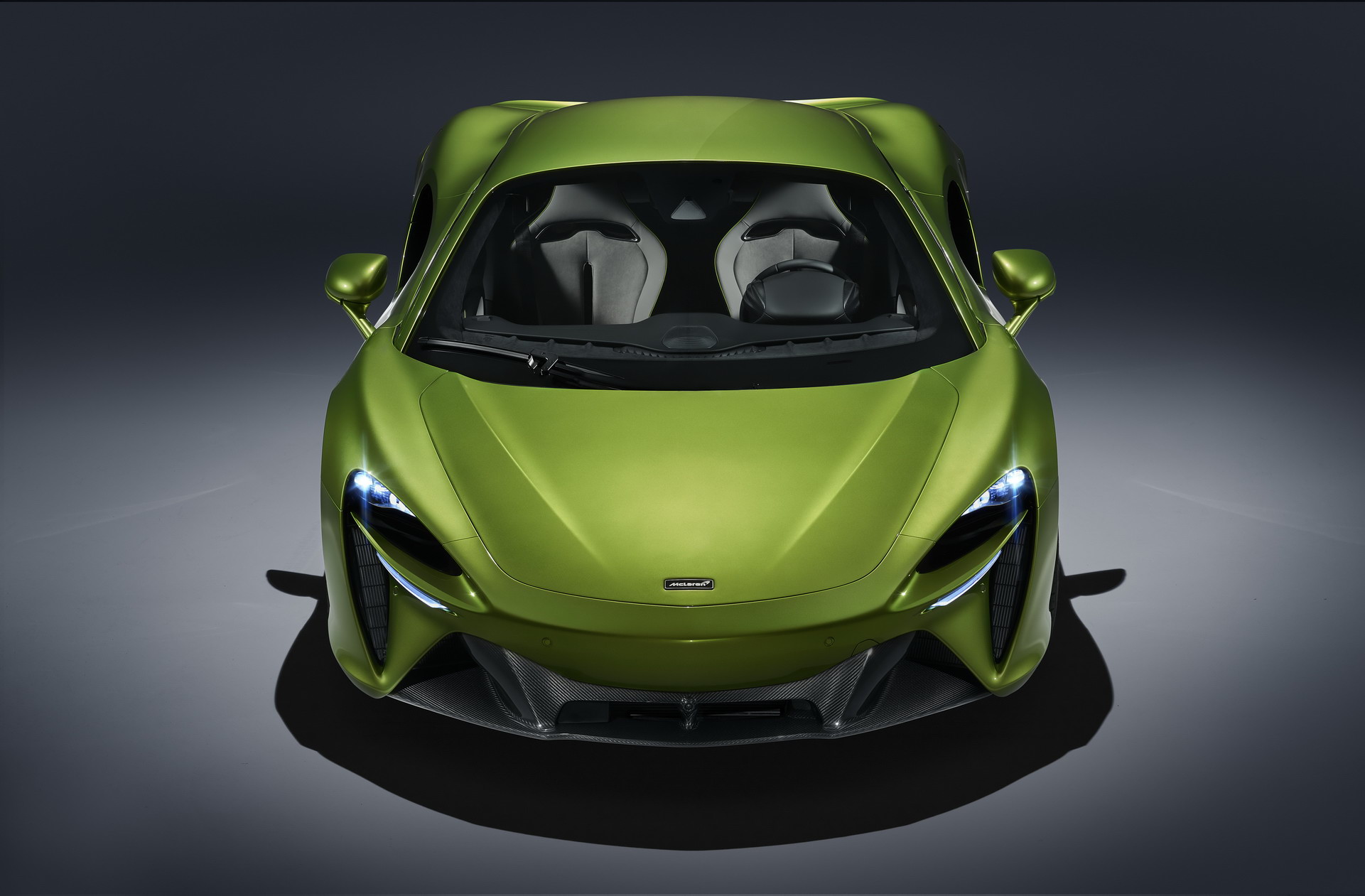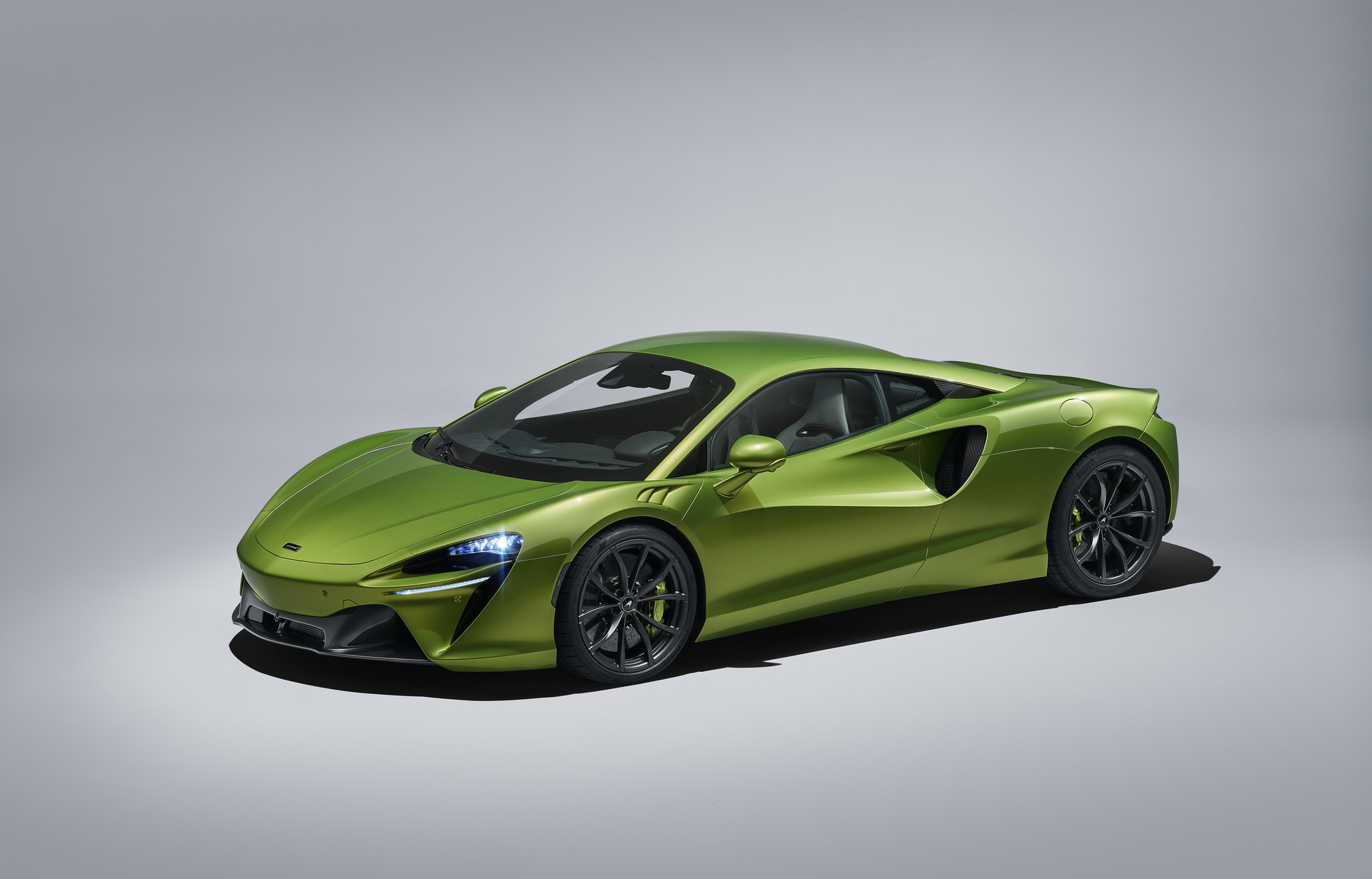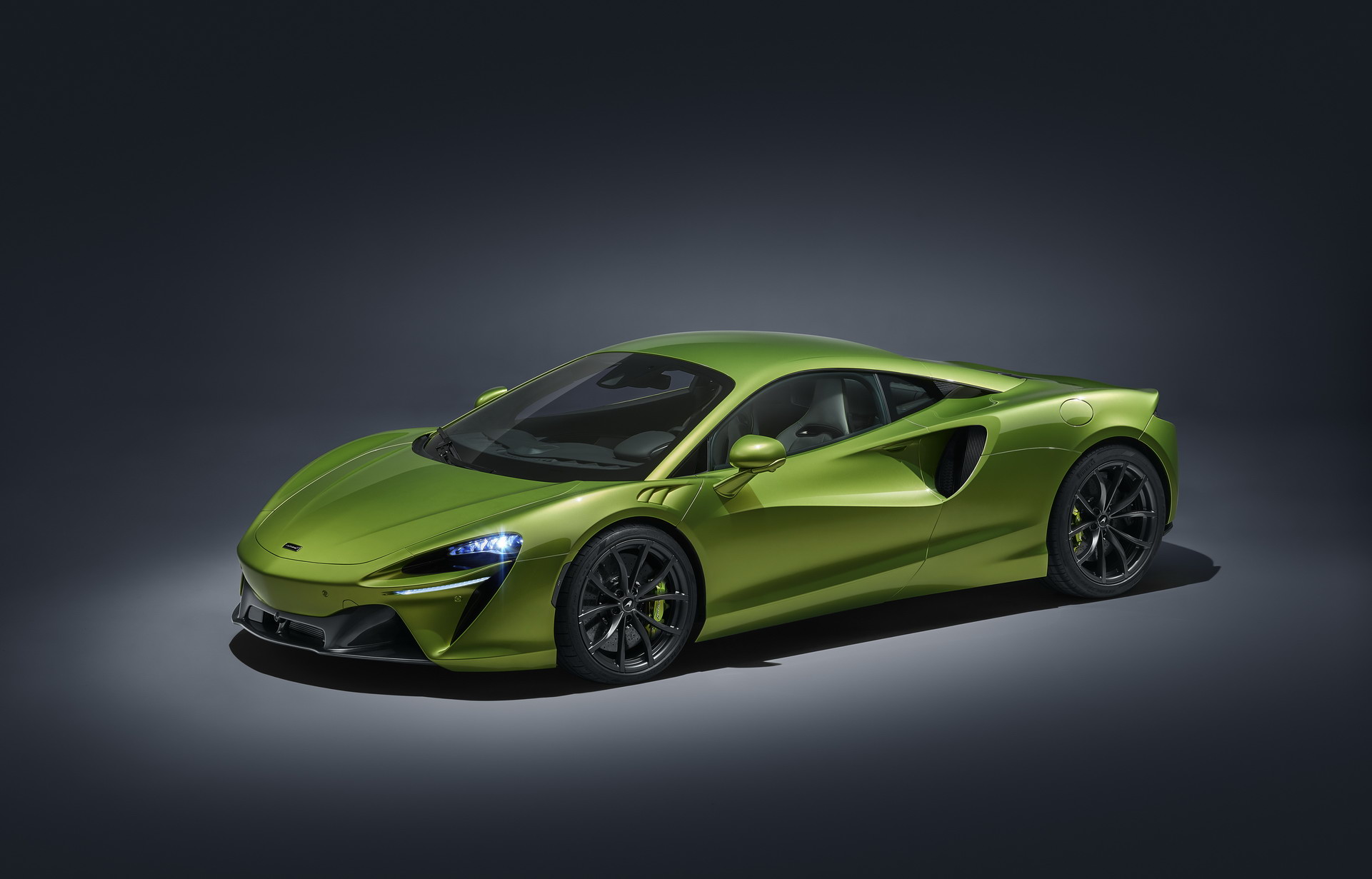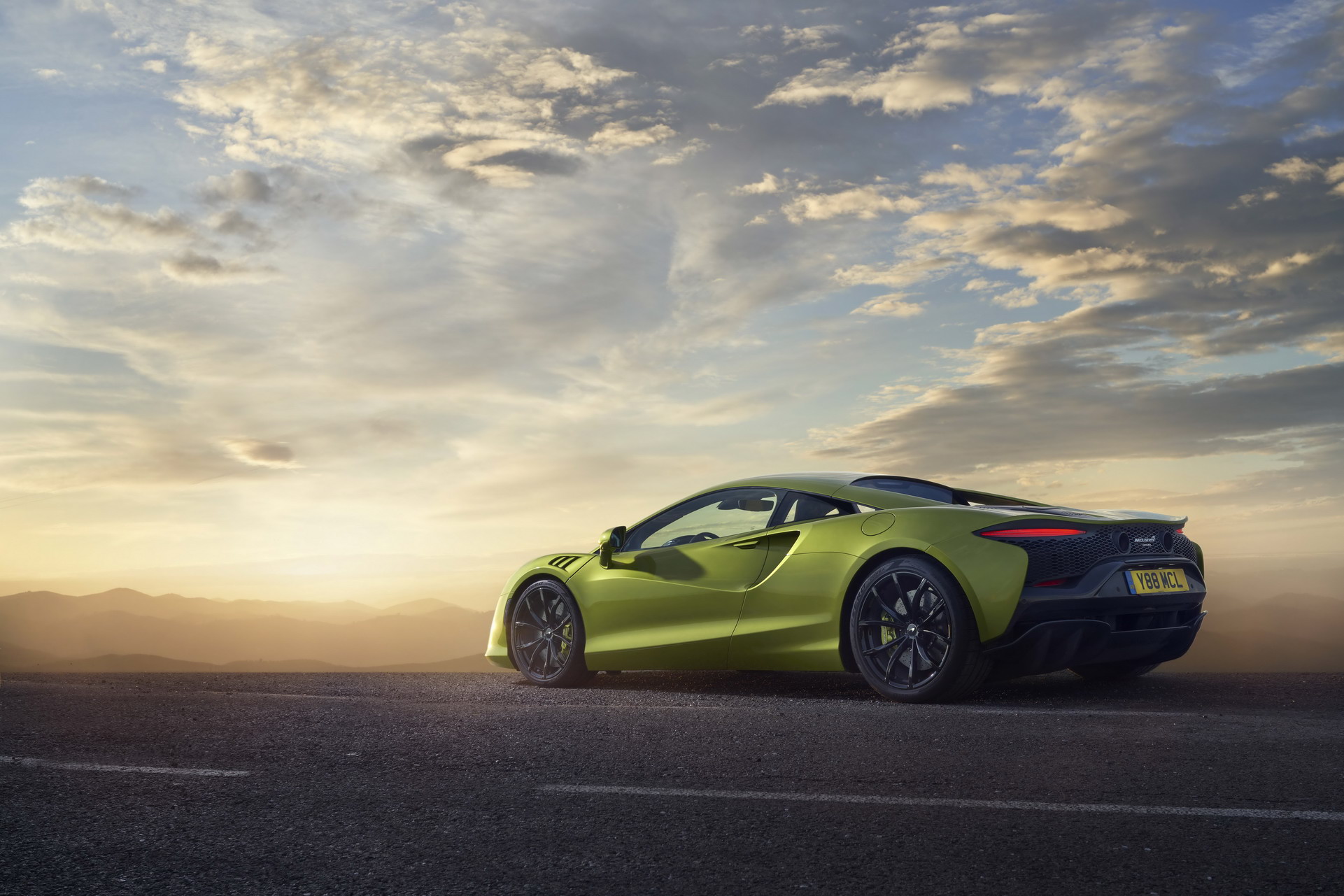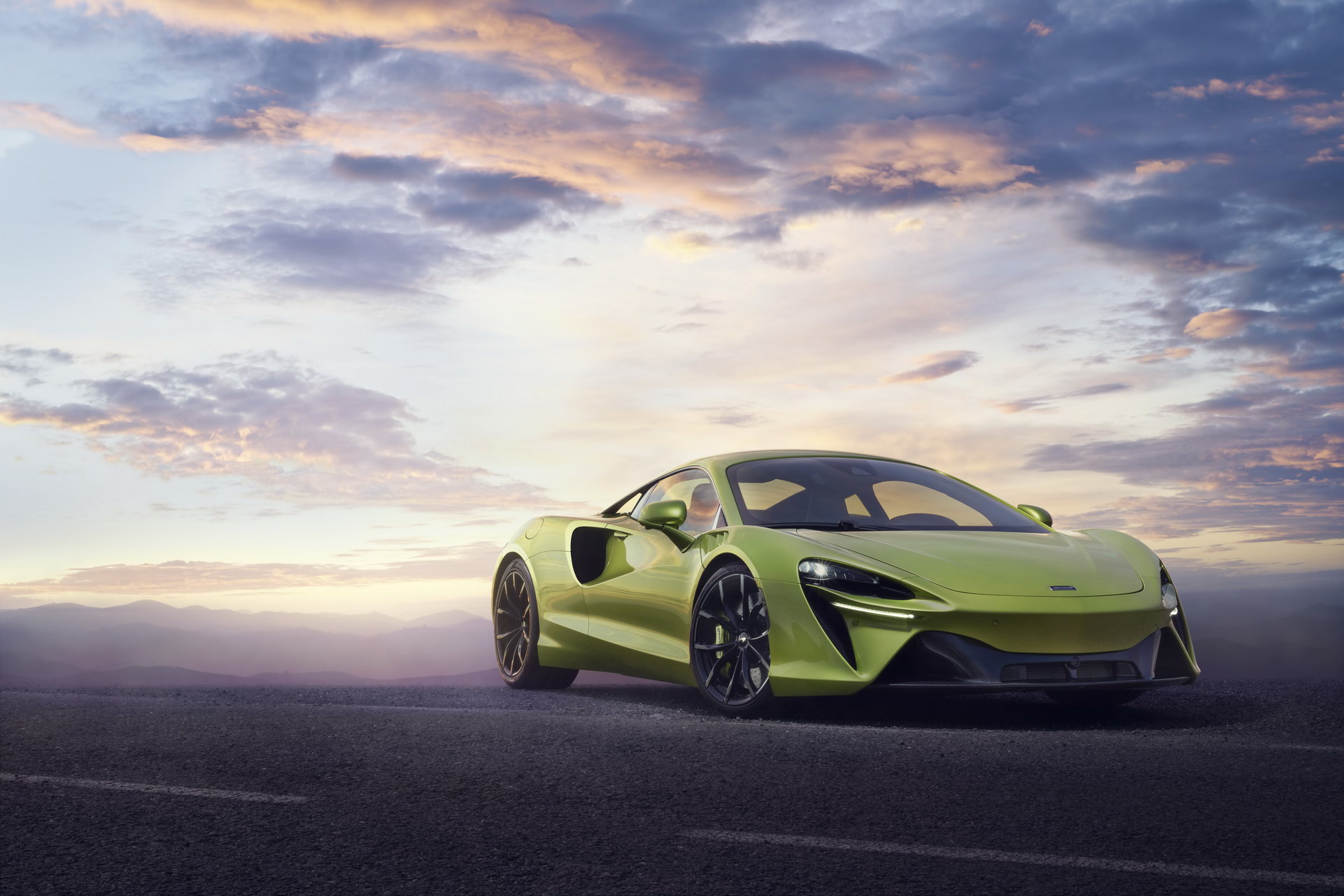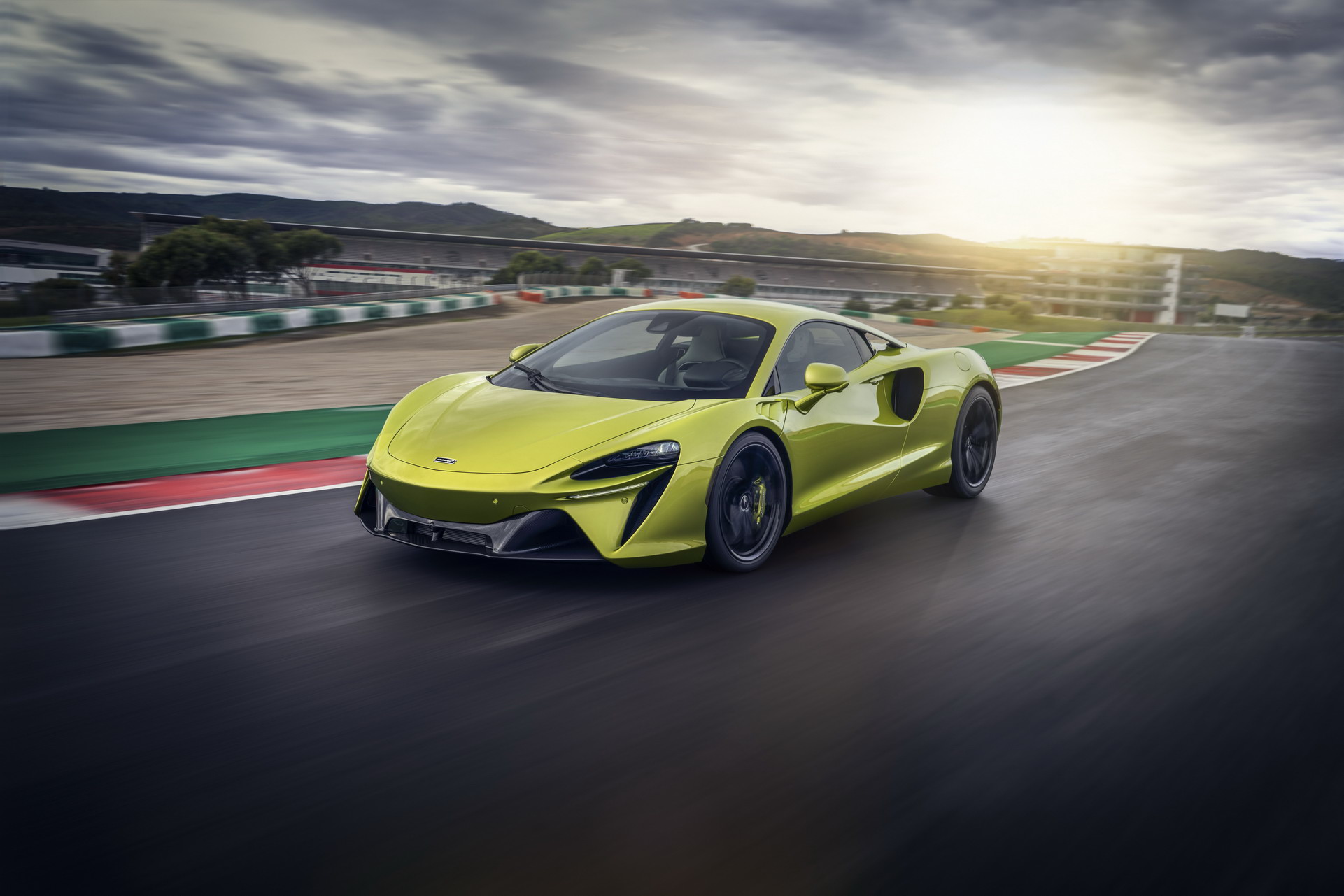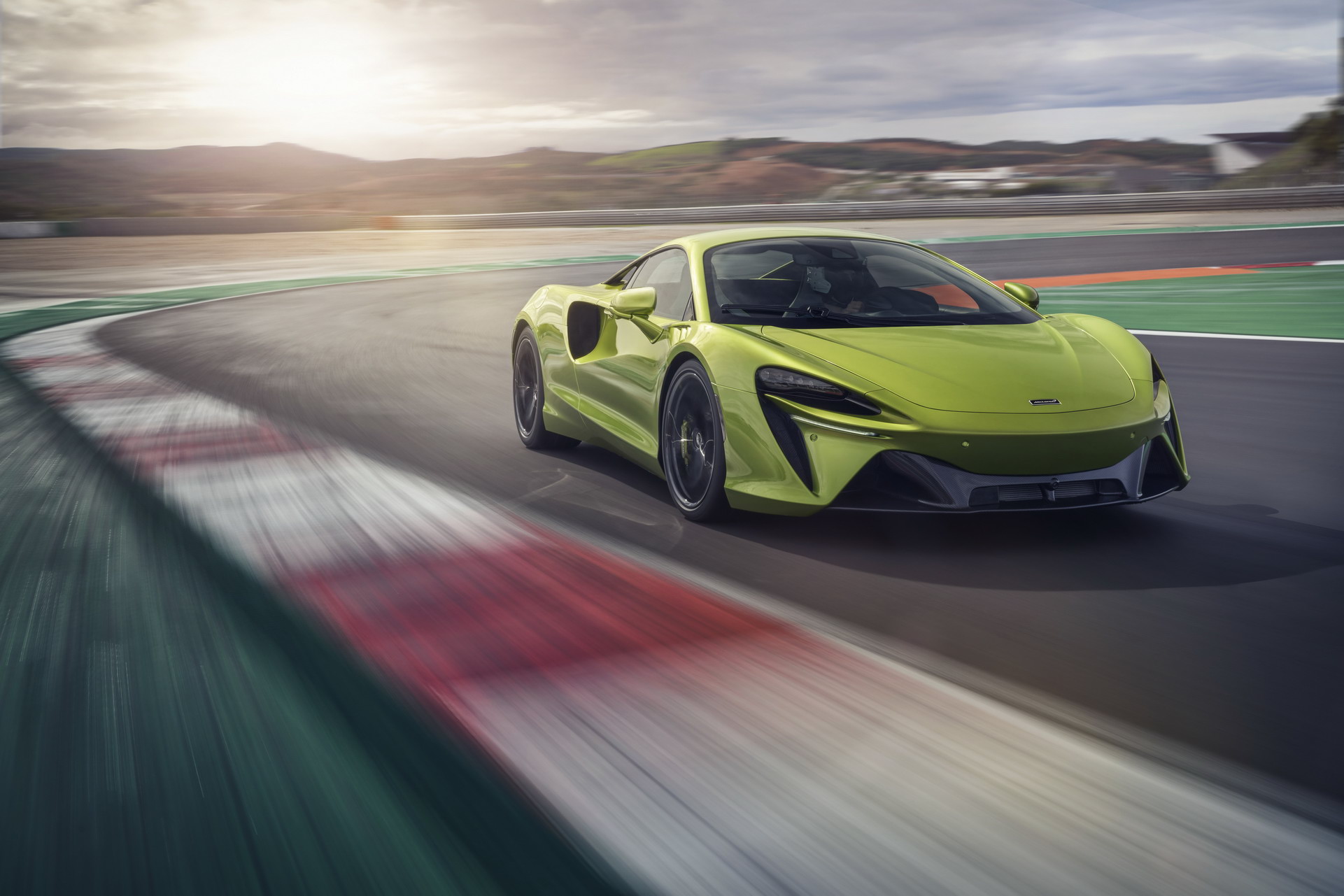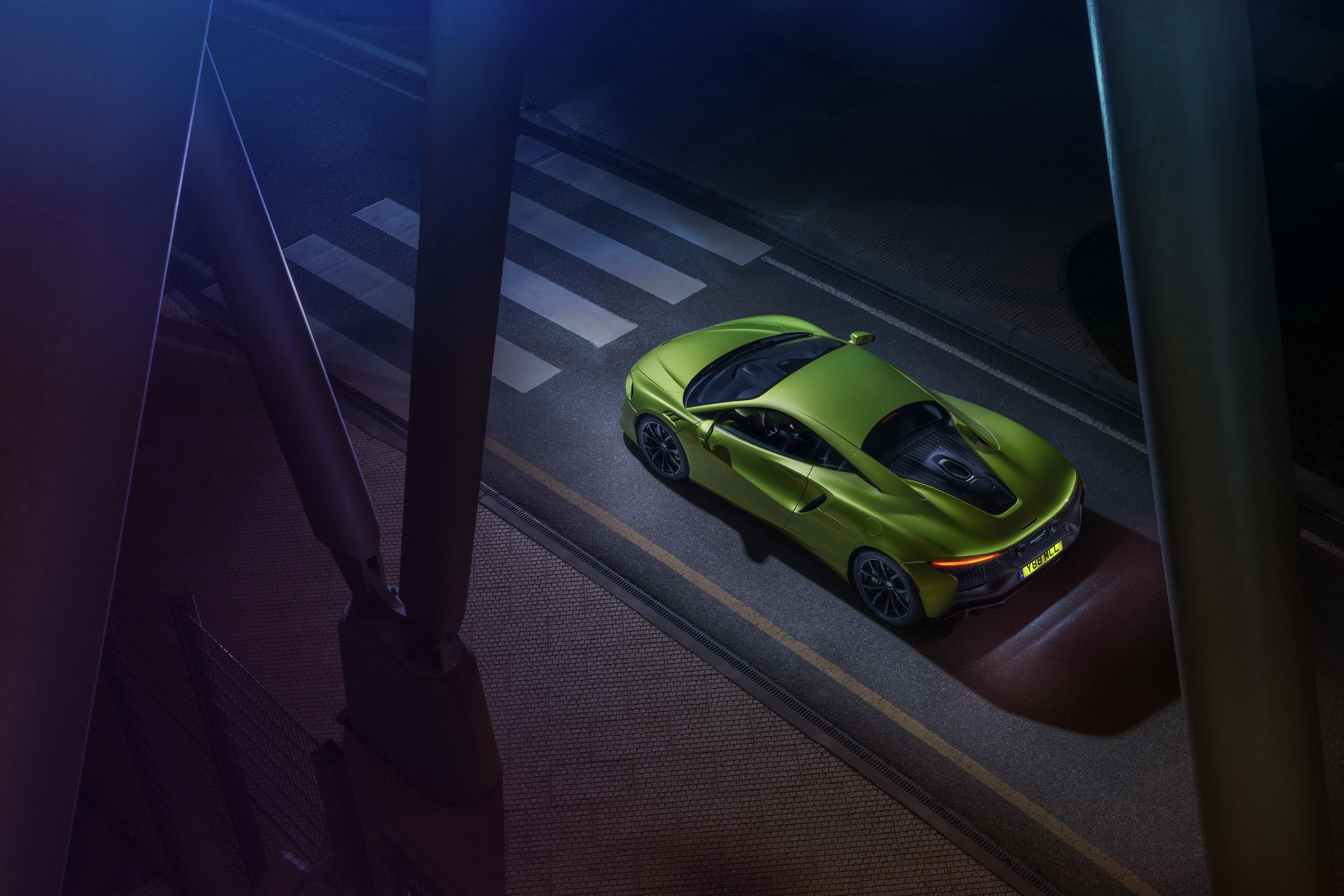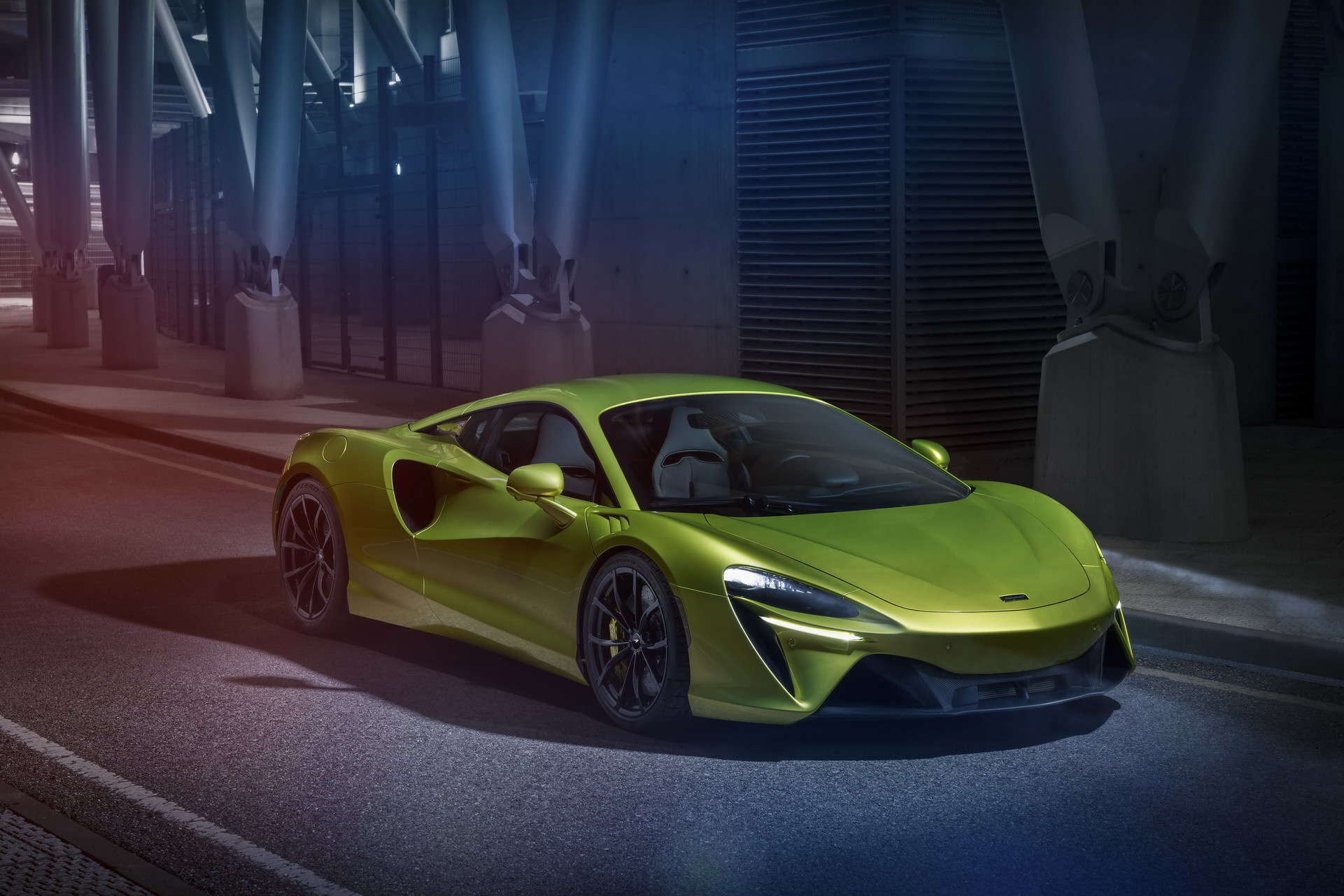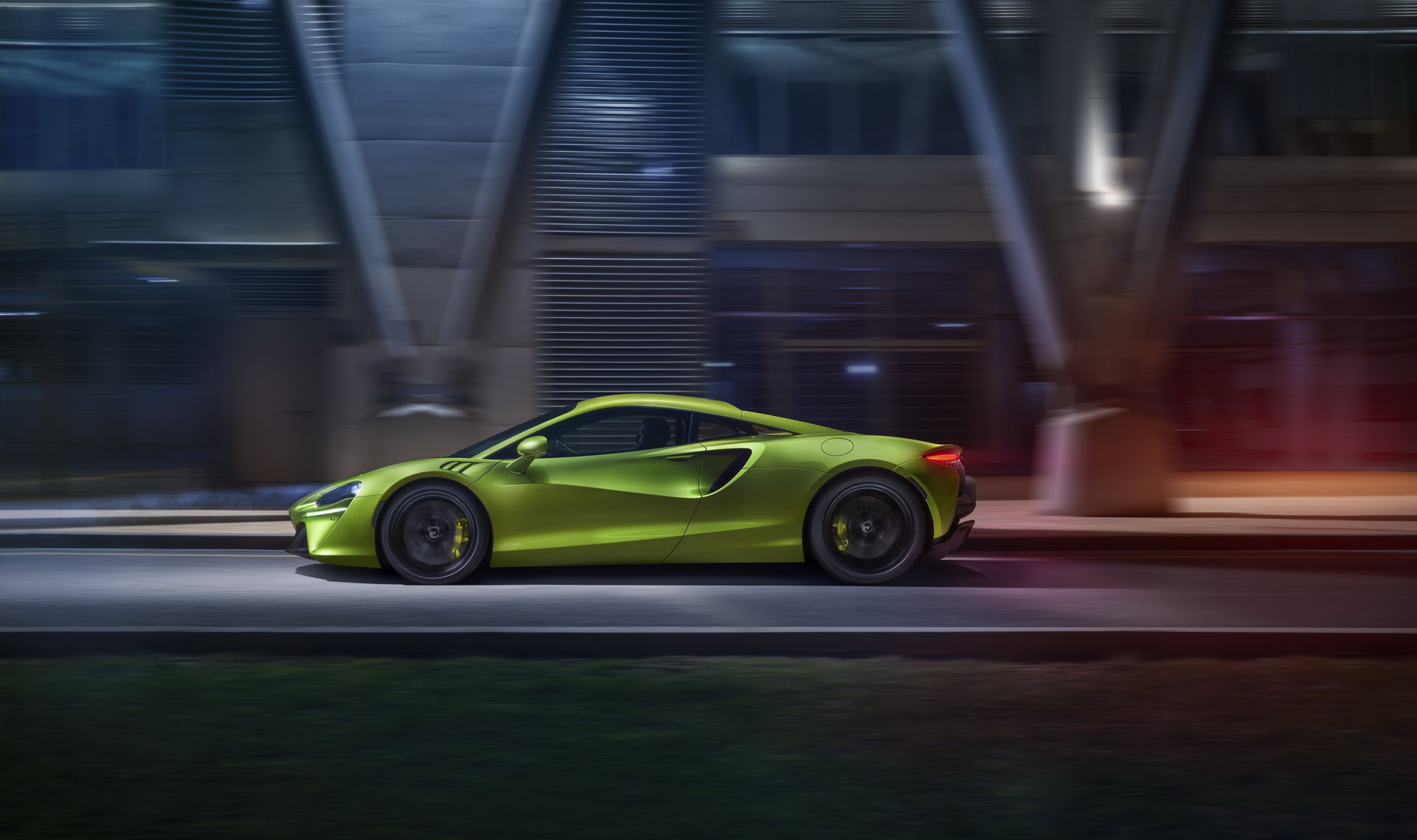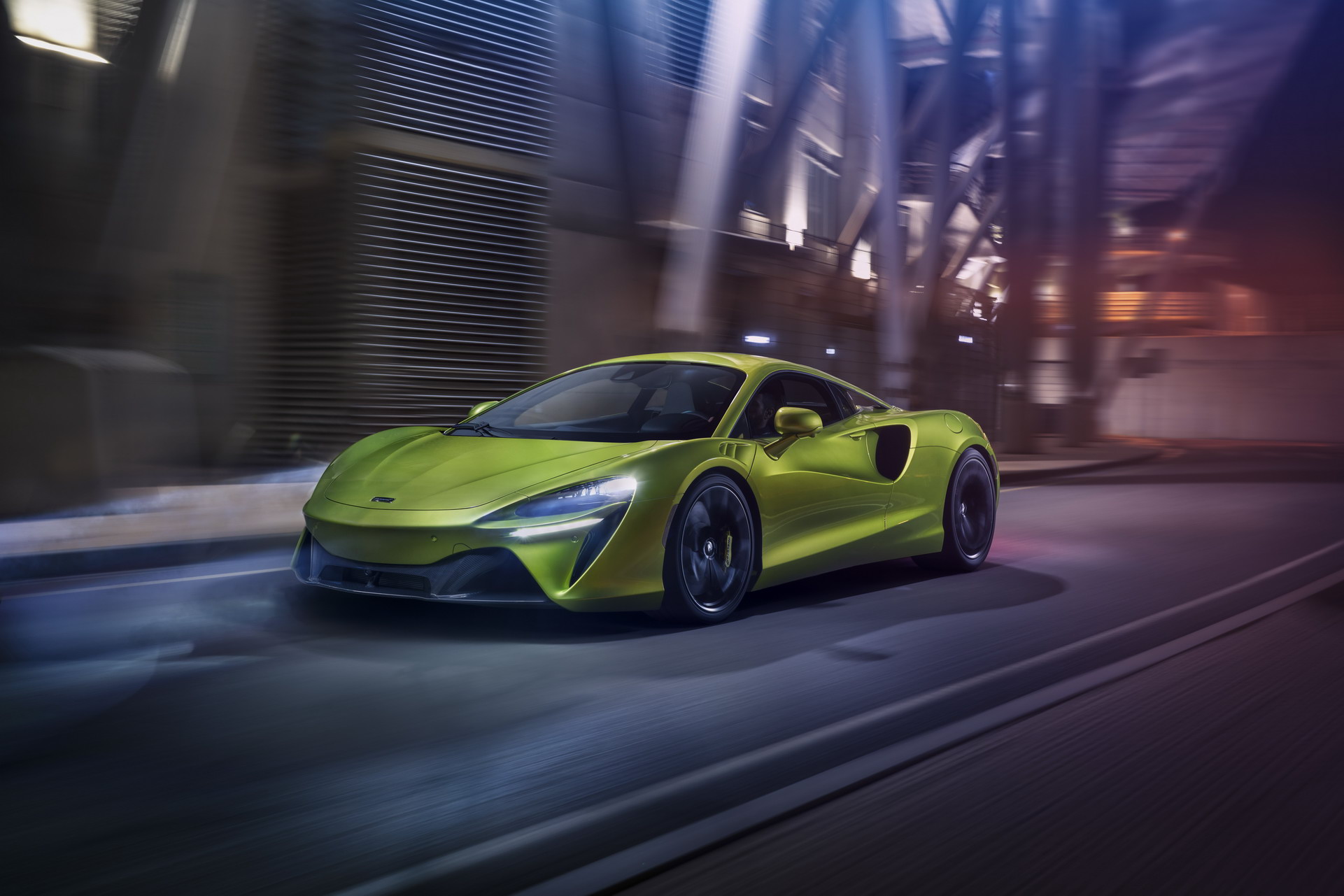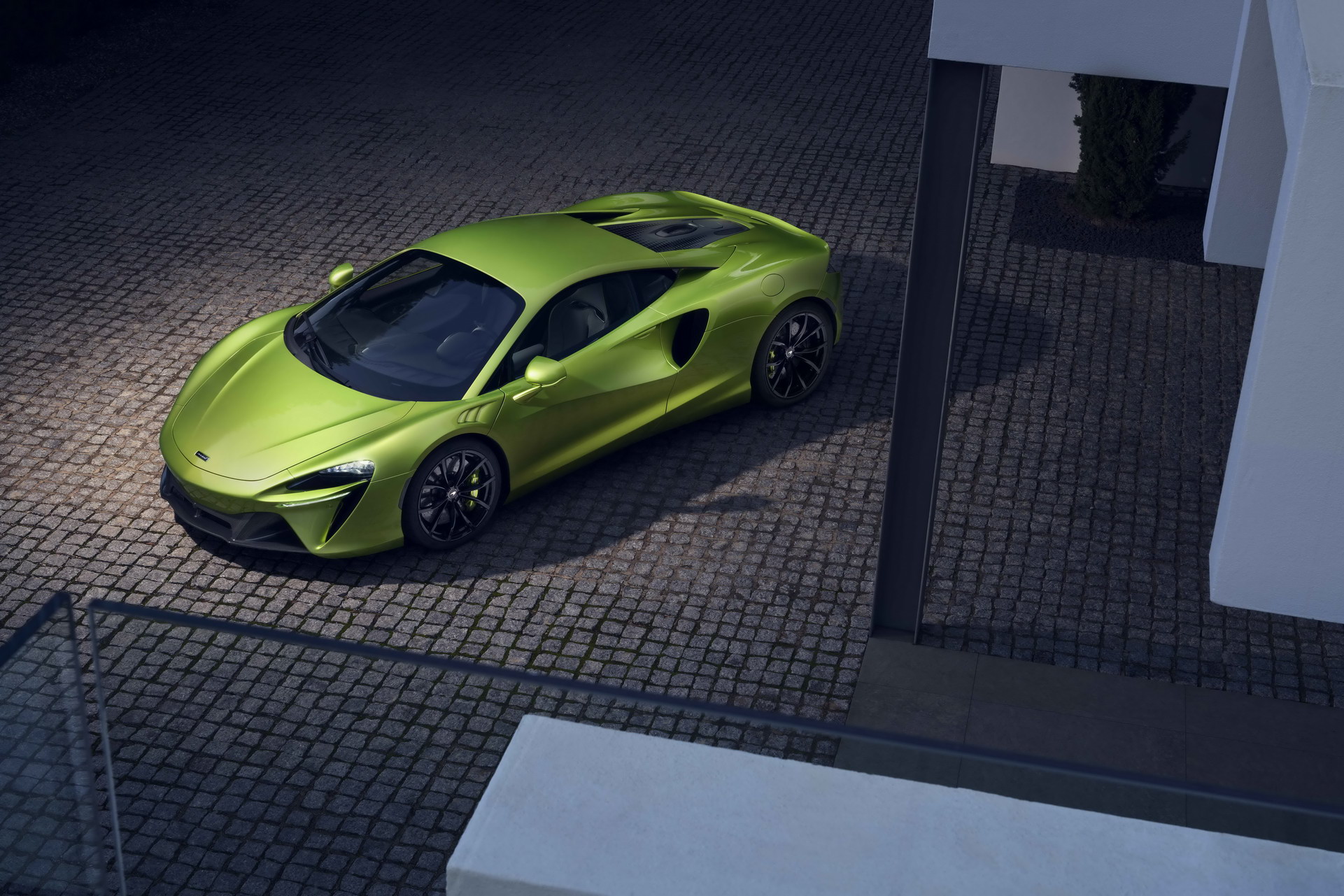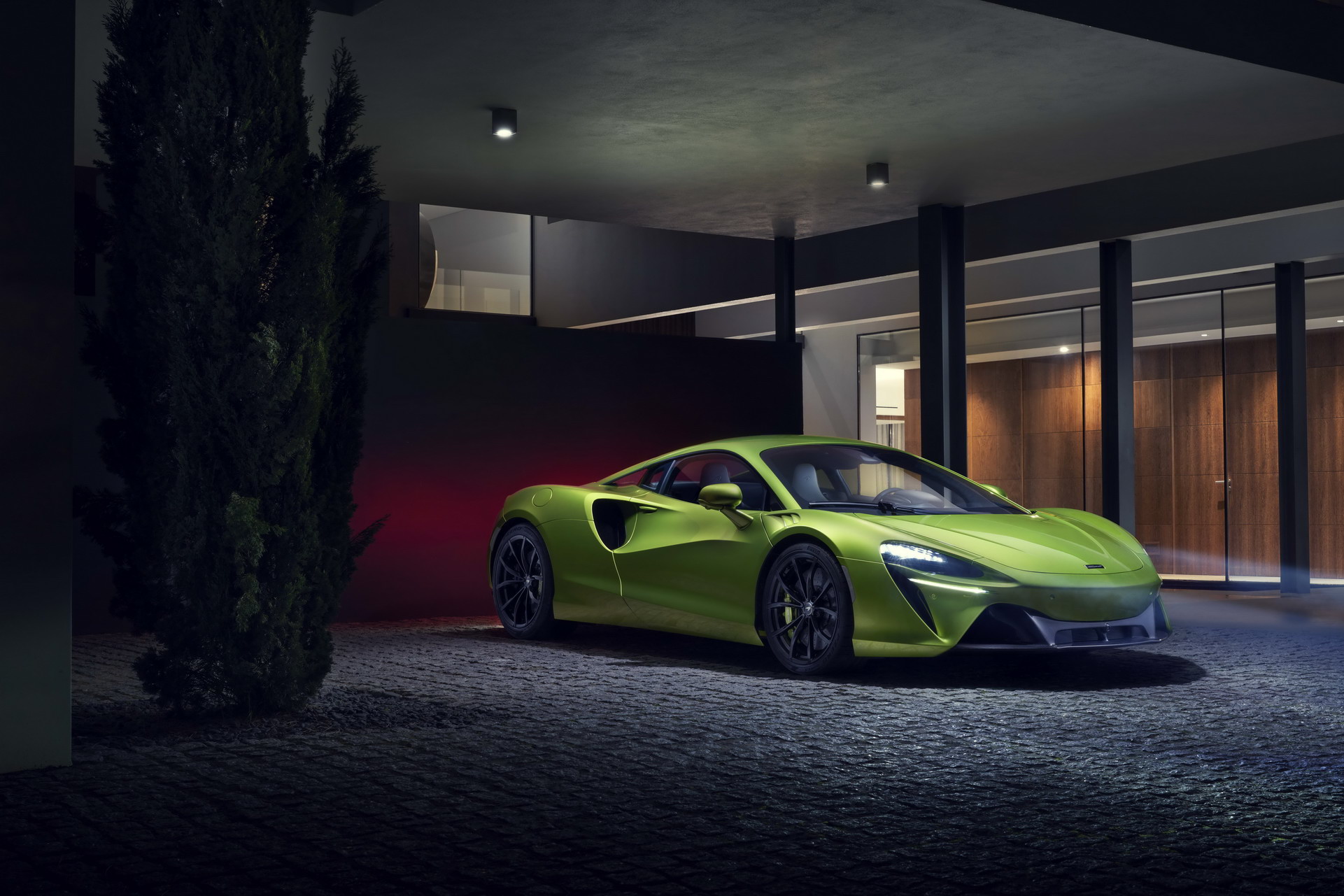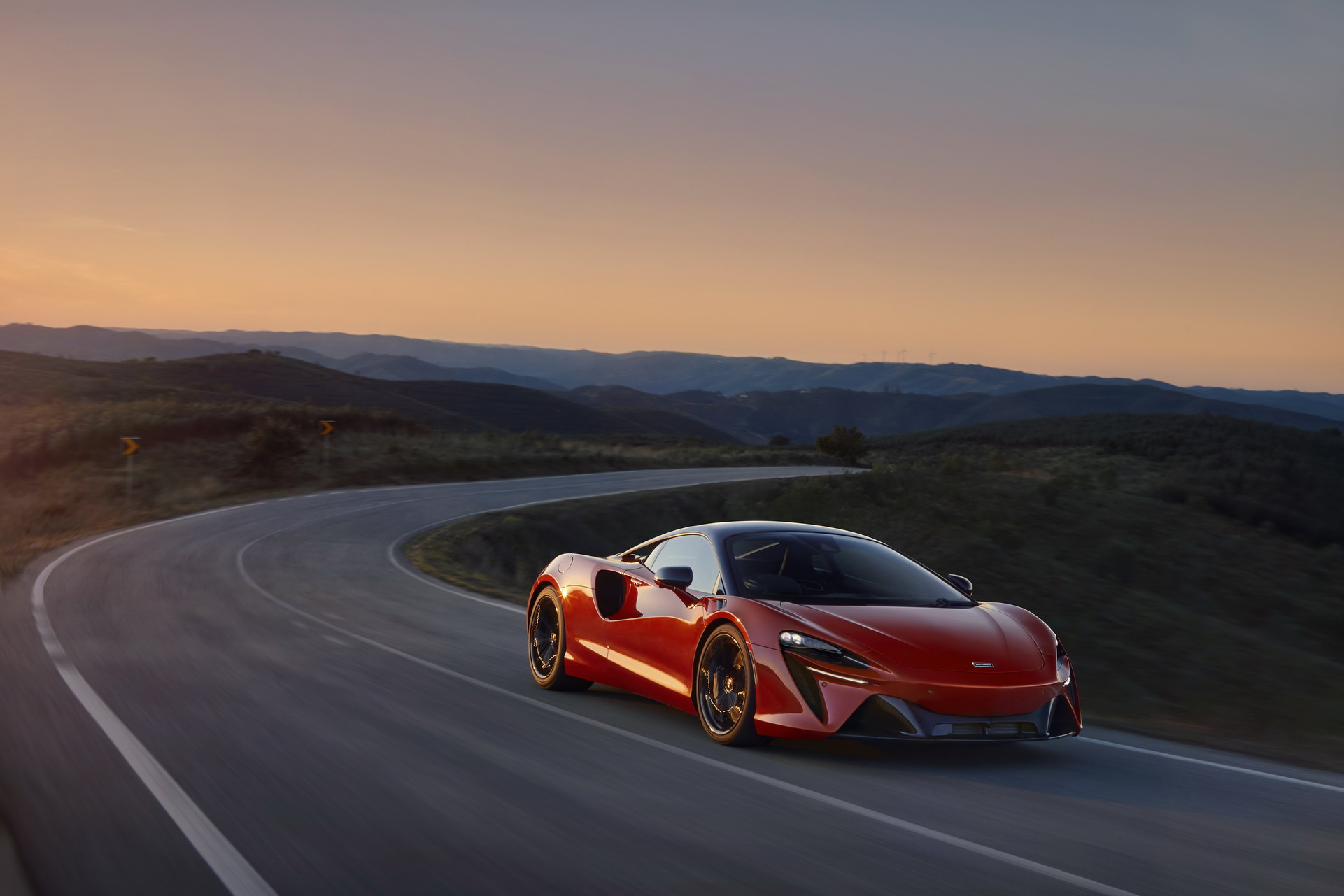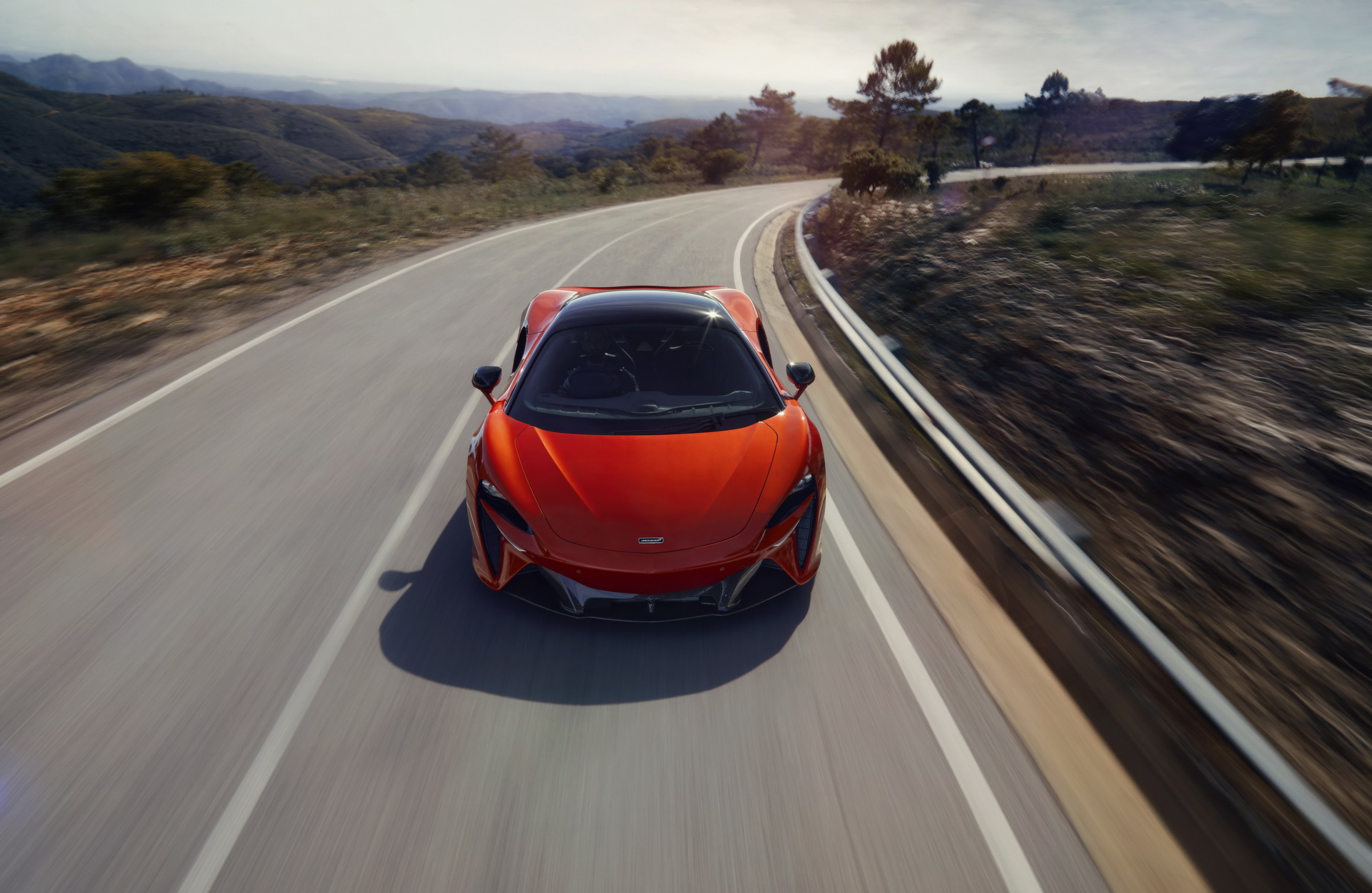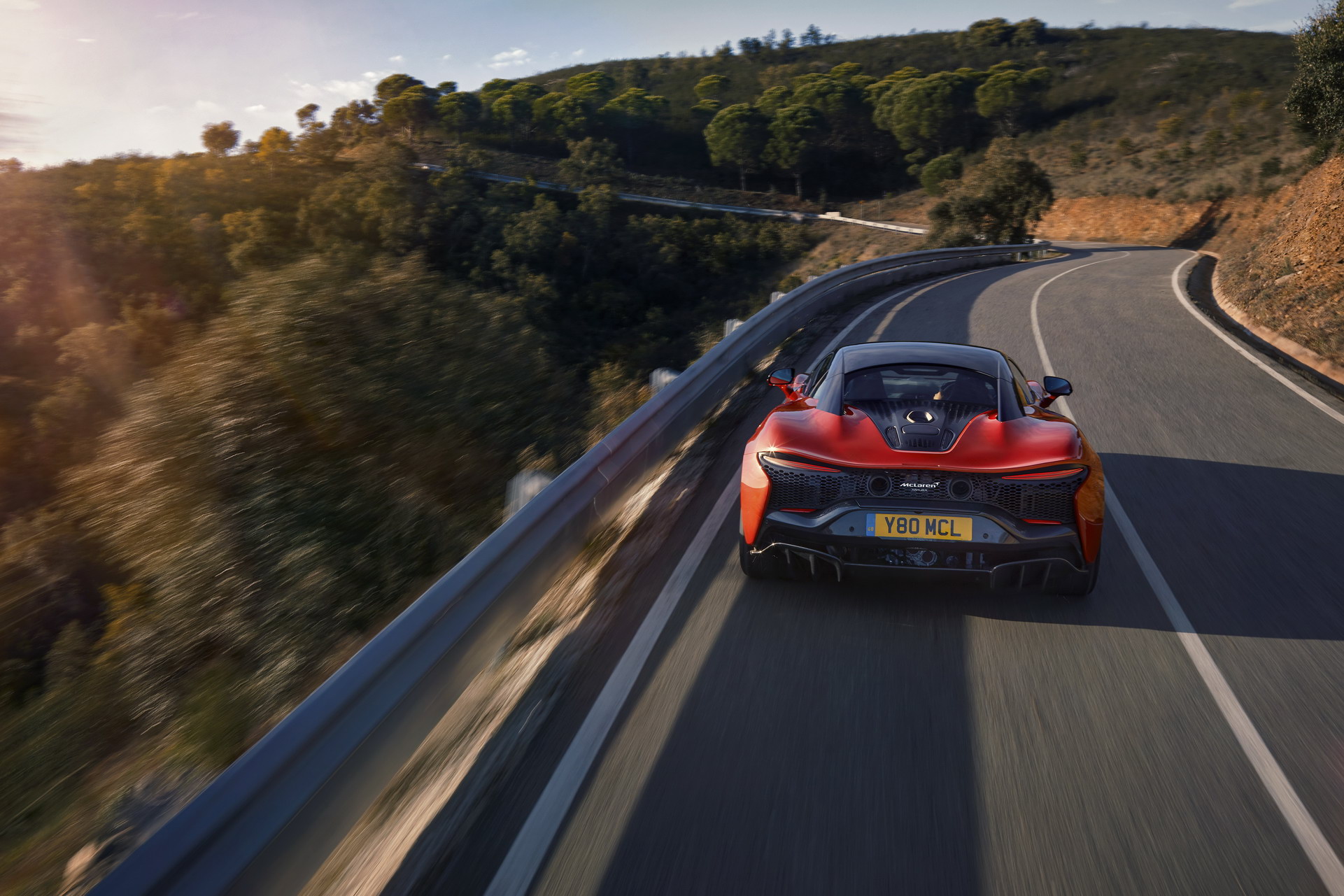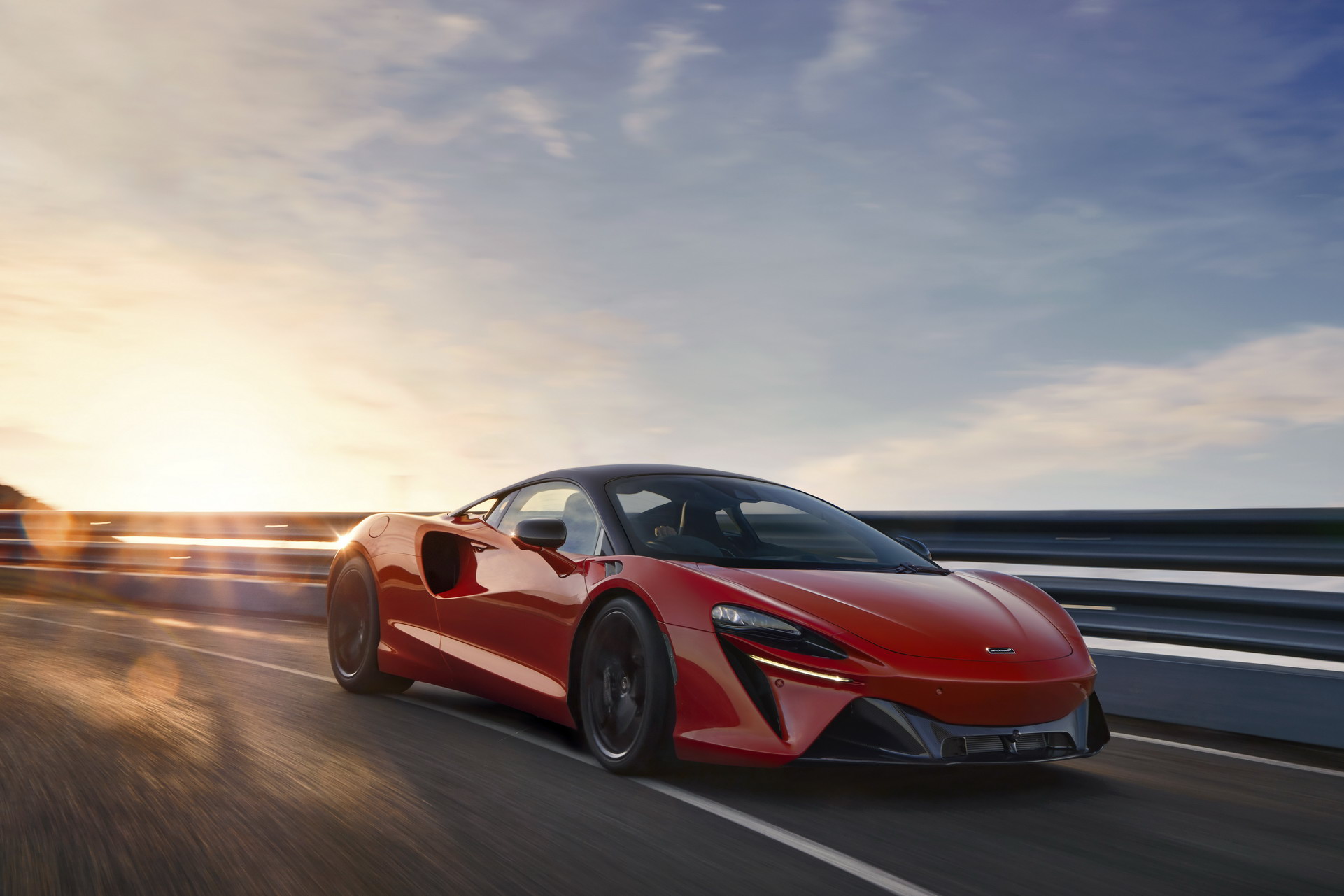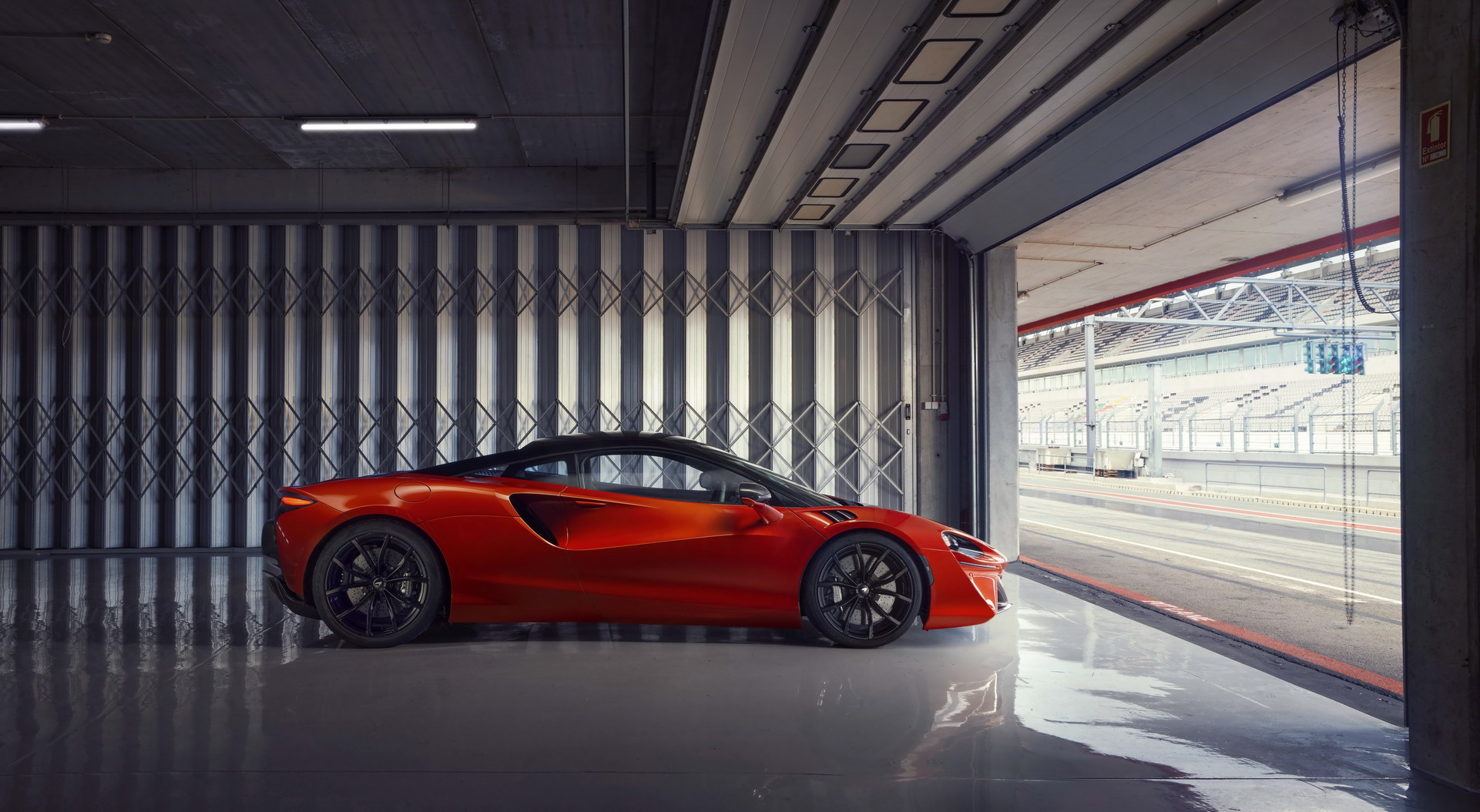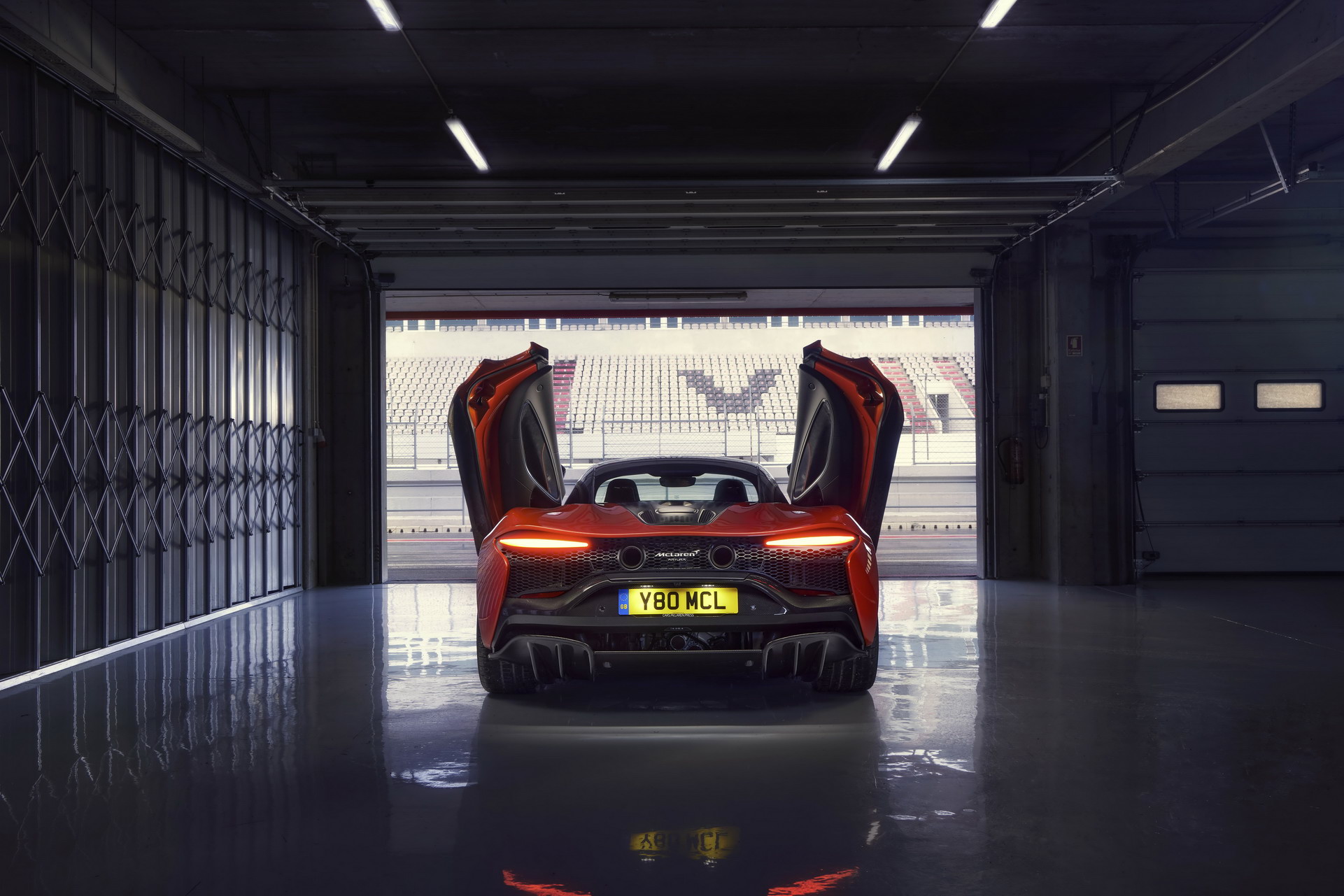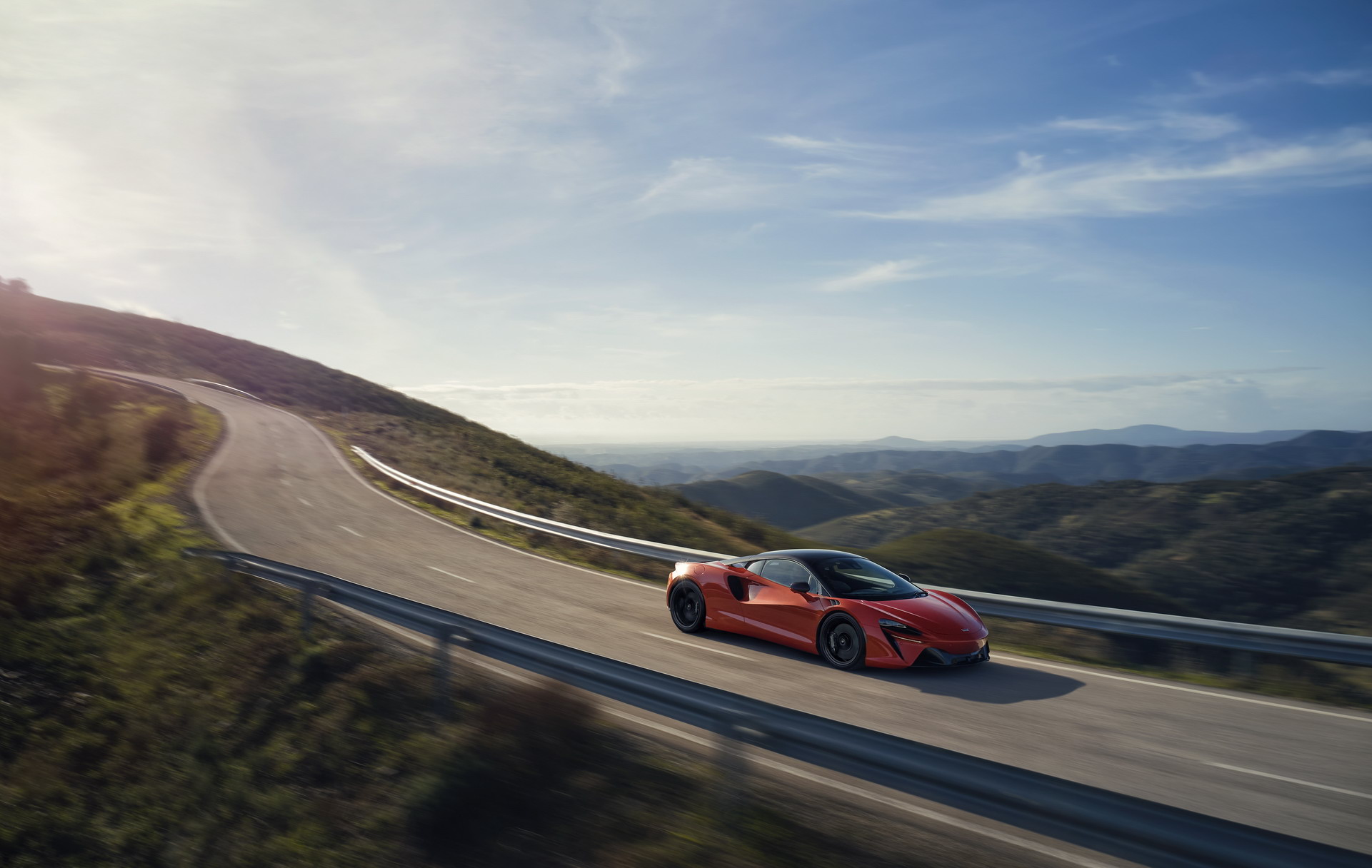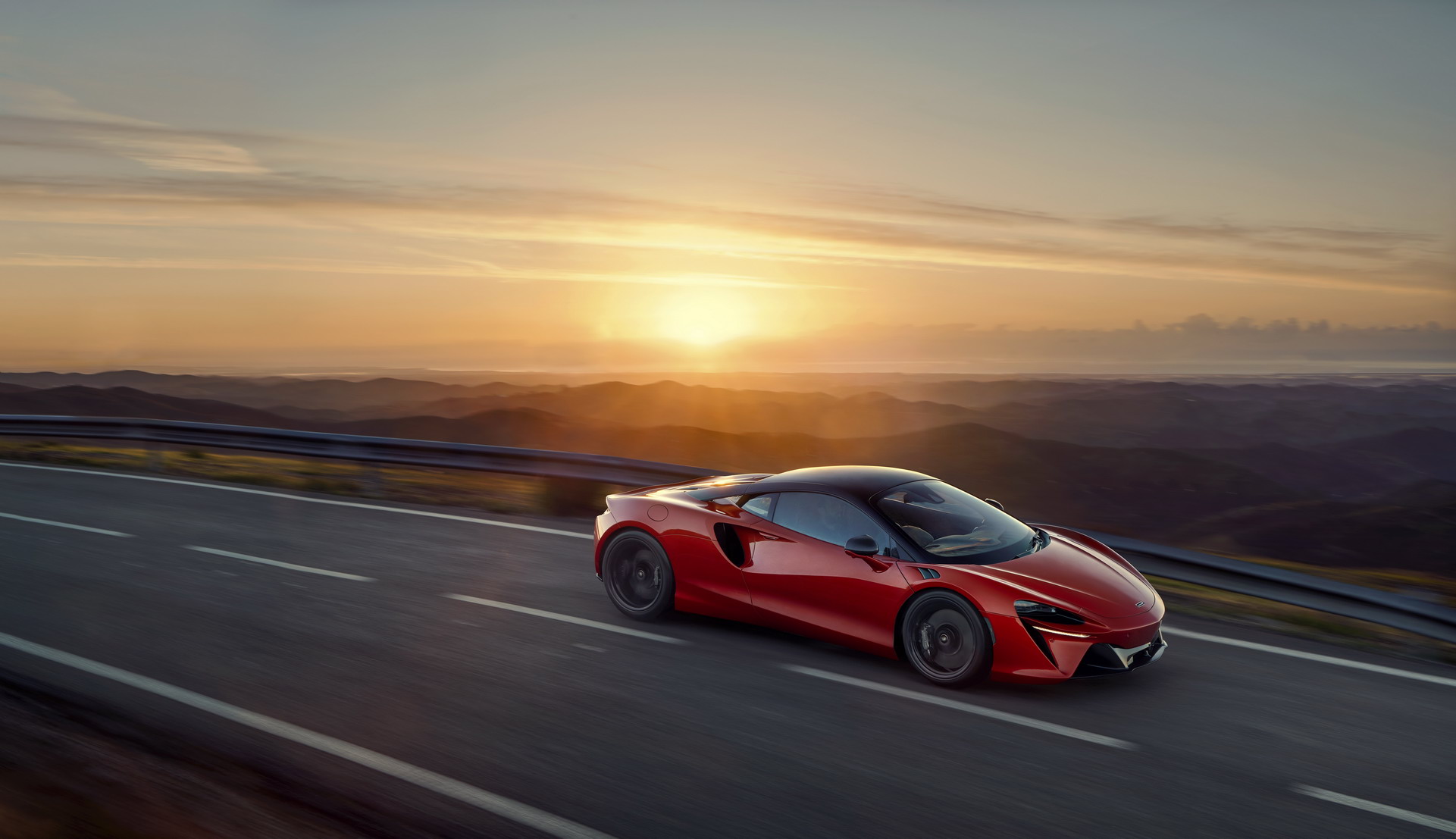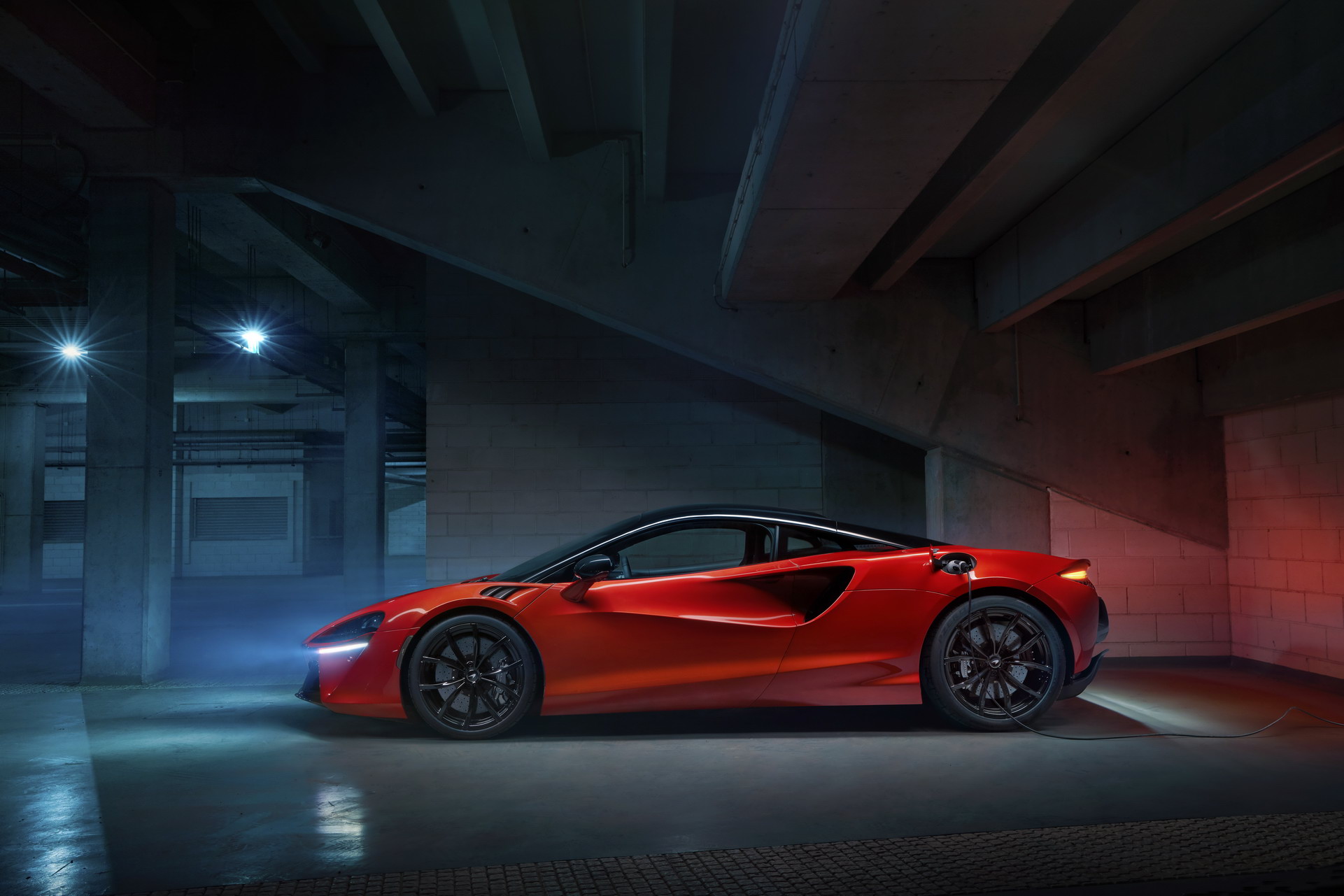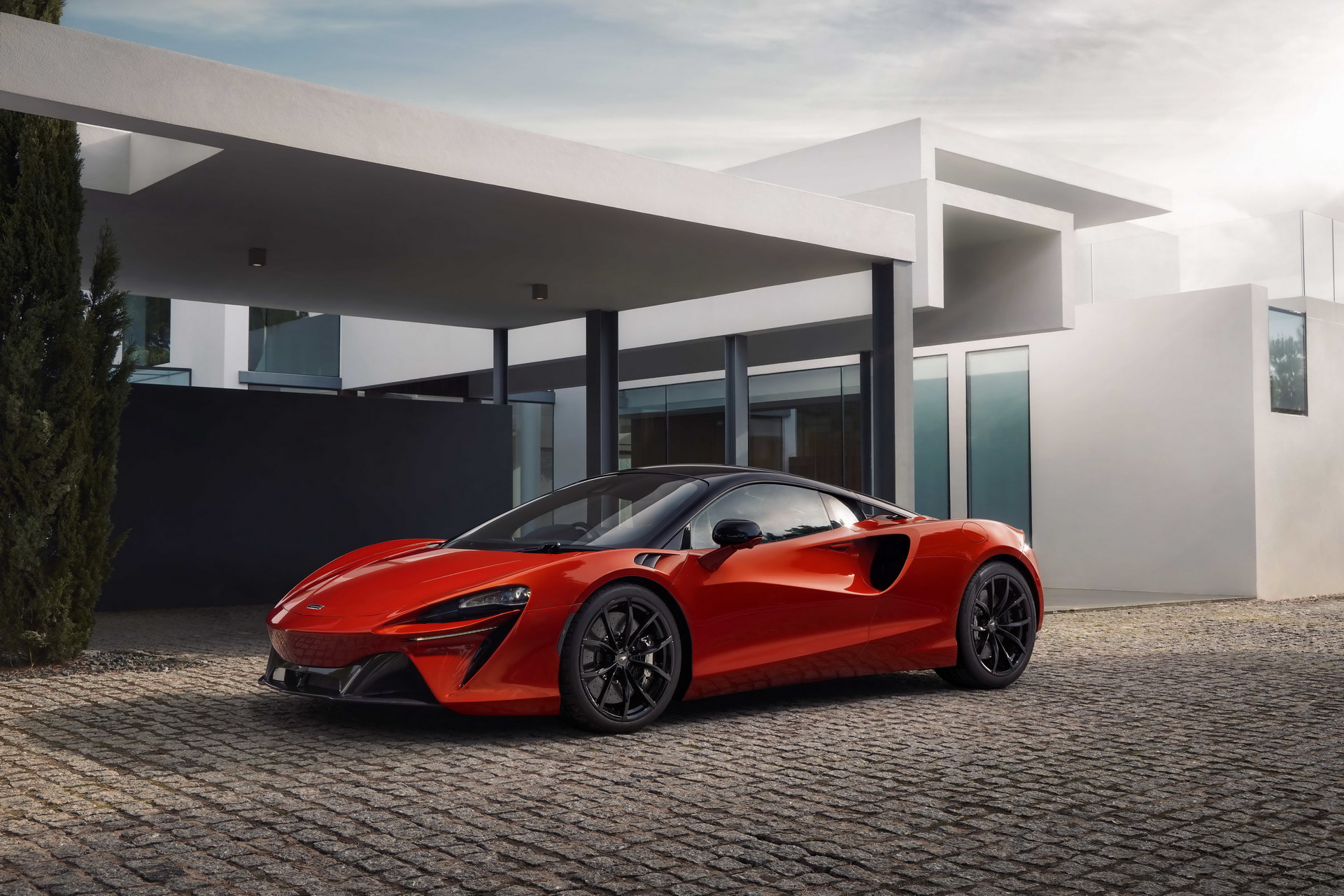Tasked with the challenge of creating a production hybrid supercar that can bring the brand into an increasingly electrified future, McLaren’s engineers have been working overtime. And what they’ve come up with looks like it could balance the needs of the future with the expectations established by the brand’s other supercars.
The result is the Artura, a 671 hp, mid-engined plug-in hybrid supercar that weighs about 3,300 lbs (1,496 kg) and can hit 60 mph in just three seconds. But to enumerate those figures so quickly doesn’t do this car justice – they need to be put in the correct context.
That curb weight that would make a Lamborghini Aventador suck its gut in is achieved despite the Artura also lugging around a battery pack and an electric motor. These allow the McLaren to go 19 miles on electric power alone and help it achieve 50 mpg. Comparing it to the ICE-only Aventador’s 11 mpg would simply be unfair for the Lambo.
How Do You Make a Hybrid Lighter?
McLaren managed to cut all that weight through obsessive attention to detail. The chassis is all new. The product of four years of development, every surface is different to any other ever seen on any previous McLaren monocoque and it was made with the automaker’s own carbon brew.
All in it weighs just 181 lbs despite having to provide a safety cell for the battery pack and the passengers as well as do more load-bearing. The monocoque is so light, in fact, that the hybrid componentry weighs more, at 287 lbs.
The Engine At The Heart Of The Artura
Impressive though that might be, the hybrid tech meant that McLaren couldn’t just whip up a new chassis and call it a day. Thus, instead of using the tried and tested V8, they created a 3.0-liter twin-turbo V6.
The engine’s cylinder banks stand apart at an angle of 120 degrees. This, says McLaren, allows them to use a shorter, stiffer crankshaft, which helps get this engine all the way up to 577 hp (430 kw) and a redline of 8,500 rpm – and that despite using forced induction.
Also Read: Ferrari F8 Tributo Amped Up With 3D-Printed Body Kit
The wide angle of the V also means that the engine can sit down farther in the car, lowering the center of gravity. And thanks to a series of engineering tricks, including, but not limited to, 3D printed cores that allow for 0.008-inch cooling passages, directly coated parent bores, and a hot V configuration, it’s not just shorter than McLaren’s V8, but it’s also nearly nine inches narrower.
To ensure it makes more power-per-liter than any of McLaren’s V8s apart from the ones in the Elva and the Senna, its turbochargers use ball-bearing technology to reduce friction. That also helps them spin up faster, while electronically actuated wastegates help maintain exact pressures to help ferret out turbo lag.
The engine block, heads, and pistons are all made of aluminum. But that’s less surprising than McLaren’s next weight-saving idea. To really make the Artura snappy, the team wanted short gears. That meant adding an extra, eighth gear to the transmission. Except, the transmission still has the same number of total gears.
A Sword In A Stone Or A Motor In A Bellhousing
The new dual-clutch transmission has 8 forward gears and that’s it. Instead of a reverse gear, it just runs the electric motor backward. That axial flux electric motor is contained entirely within the bell housing of the Artura’s transmission. That helps keep the dimensions of the whole power unit tight and also helps it deliver its power usefully.
Moreover, the gearbox handles power from both the engine and the electric motor. That means that in EV mode, the engine can be completely disconnected from the wheels, while at low speeds, the electric motor is used to smooth out the dual-clutch transmission’s shifts.
Related: Customers Tell McLaren Don’t Build Too Many Cars
This is the first axial flux motor ever to go into a series-production vehicle. It weighs just 34 lbs and makes nearly 100 hp. If Mclaren had used a radial flux motor, it would have weighed more than twice as much. Not only can it get the Artura 19 miles down the road on electric power alone thanks to a 7.4 kWh battery, it can also get it up to a top speed of 81 mph.
Additionally, McLaren says that the Artura has been designed with full Plug-in Hybrid (PHEV) capability. Its battery can be charged to 80% of its capacity in just 2.5 hours with a standard EVSE cable and can also be charged by the internal combustion engine while driving according to the driving mode selected.
Can The Performance Live Up To The Name?
The point of all this weight saving and clever engineerinng is a car that drives in a manner befitting the McLaren name. Indeed, owners won’t want for speed. It hits 60 mph in 3.0, which means it takes just 0.2 seconds longer to get to highway speed than the McLaren P1. It can also run the quarter-mile in just 10.7 seconds and reach a top speed of 205 mph.
Thanks to 15.4-inch (15-inch at the rear) carbon-ceramic discs and six-piston aluminum monobloc calipers, it can come to a stop from 62 mph in just 31 feet and from 124 mph in just 126 feet. It also has fancy-pants tires (235/35Z R19 at the front and 295/35 R20 at the rear) from Pirelli, each of which has a chip in it to deliver information to the onboard computer to help optimize driver aids.
Something that is decidedly old-school, though, is the hydraulic power steering. McLaren says it likes the tried and tested system for its feedback and engagement.
A little less old school is the E-diff. Essential to handle the instant torque of the electric motor, the E-diff can lock when you want this RWD supercar to misbehave a bit, or meter out torque to the outside wheel to help push you around the corner.
Carved To Control The Wind
Another area of great importance is the bodywork. McLaren describes it as shrink-wrapped, and every vent, duct, and fold has been designed to guide the air into the cooling system or away from where it can mess up the flow.
The front wheels’ vented louvers, for instance, help reduce pressure in the wheel arches and guide dirty air away from the side intakes. Clean air, meanwhile, is guided into those same intakes via a complex path set out by the Artura’s various curves and folds. Even the mirrors play a role in bending the air into the right locations.
Customers will be able to pick from 31 exterior colors and carbon fiber body parts can be selected individually or in packages.
Performance Outside, Luxury Inside
Inside, meanwhile, McLaren wanted the term “functional jewelry” to define the look. You can decide for yourself if that’s good or not, but what can’t be debated is the comfort. The Artura comes standard with power adjusting heated seats, but if you don’t mind paying a little more for lighter ones (after all, didn’t its engineers spend all that time cutting weight?) you can also opt for the Clubsport seats.
These feature the lightweightadvantages of a bucket seat, but they have extra adjustment capabilities. The seats move in an elliptical arc along the floor, which means that they can mimic backrest adjustment. If you’ve never driven in a car whose bucket seats were incorrectly laid out for your body mechanics, believe me when I tell you this is a major innovation.
Either way, McLaren figures that its cabin is big enough to comfortably sit a 6’4″ driver. And thanks to an instrument binnacle that’s connected to the steering column, no matter where you position the wheel, you’ll be able to see the gauges.
Speaking of the binnacle, it contains a number of apps, like track telemetry and variable drift control, and can be hooked up to Apple CarPlay and Android auto.
So, How Much Does It Cost?
Prices for all of this excellence start at $225,000 and McLaren retailers are already accepting orders, so if you can spare the cash, you might want to get that configurator running. First deliveries first deliveries to customers will commence in the third quarter of the year.




